1lumen selects and reviews products personally. We may earn affiliate commissions through our links, which help support our testing.
Olight Perun Mini Desert kit review:
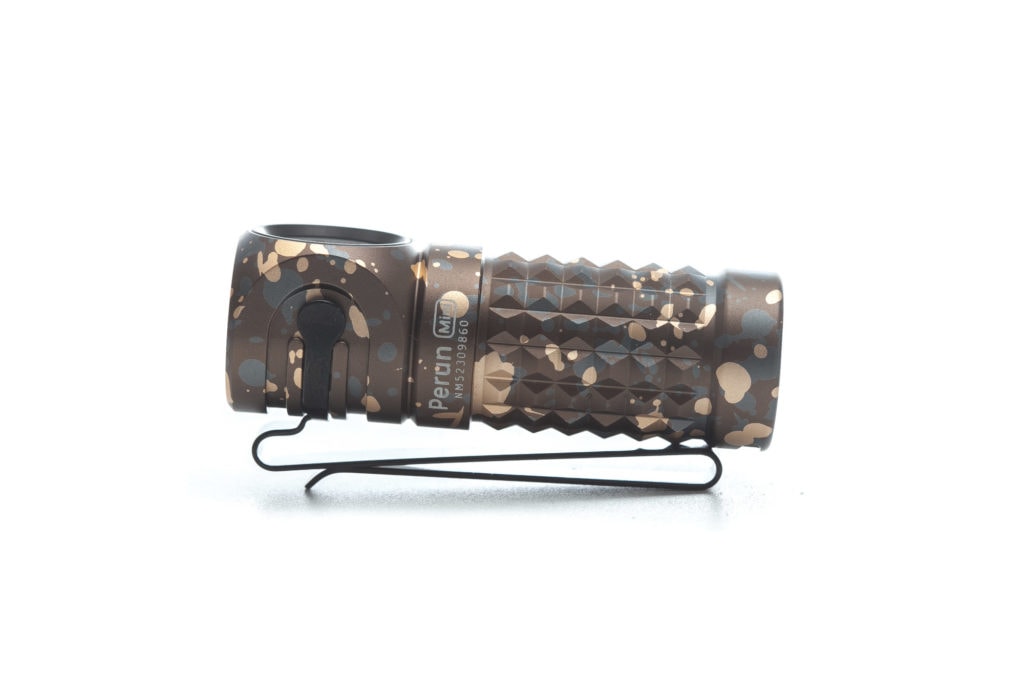
Olight Perun Mini specifications
| Brand/model | Olight Perun Mini |
|---|---|
| Category | Headlamp |
| LED | ? |
| Max. Lumens | 1,000 lm |
| Max. Beam intensity / distance | 2,500 cd |
| Battery config. | 16340 |
| Onboard charging | Proprietary magnetic charging |
| Modes | 5 |
| Blinkies | SOS |
| Reflector | TIR honeycomb |
| Waterproof | IPX8 |
| Review date | June 2022 |
Introduction:
Olight has a wide range of flashlight, ranging from tiny keychain lights to massive lumenmonsters. But besides flashlights, they make all sorts of other gear as well. How about knives? Yup. How about pens? Yup. How about table lamps? Yup. But they also have a nice array of headlamps. Gabriel reviewed the Olight Perun 2, which is a high output right-angle headlamp. And the one I’m reviewing here is its little sibling, the Olight Perun Mini. This specific one is a limited edition Mini Desert Camo.
They are available in 2 beam temperatures: cool white and neutral white. And I will review both here.
Package quality.
The Olight Perun Mini arrives in a simple carton board box. Nothing really fancy, but with quite a number of accessories. Inside the box you’ll find the following:
- The flashlight: Olight Perun Mini
- Rechargeable lithium-ion battery loaded inside the flashlight (Olight ORB-16C05-10C 16340 type with 550mAh)
- Pocket clip (attached)
- Lanyard
- Lanyard pin tool
- Magnetic USB cable
- Head strap
- Duty patch with flashlight attachment
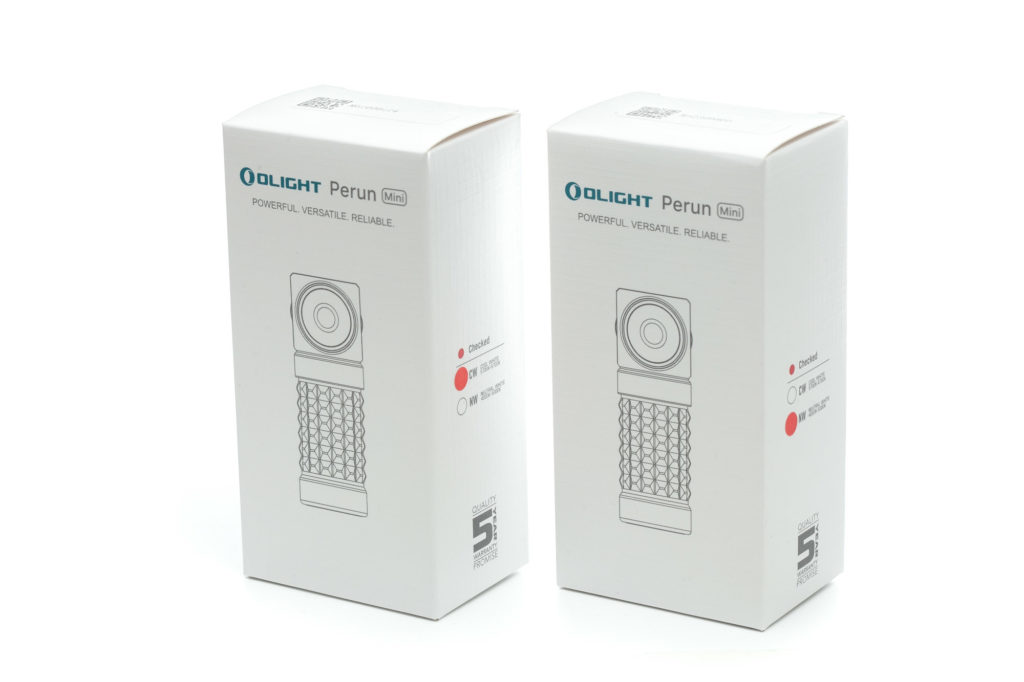
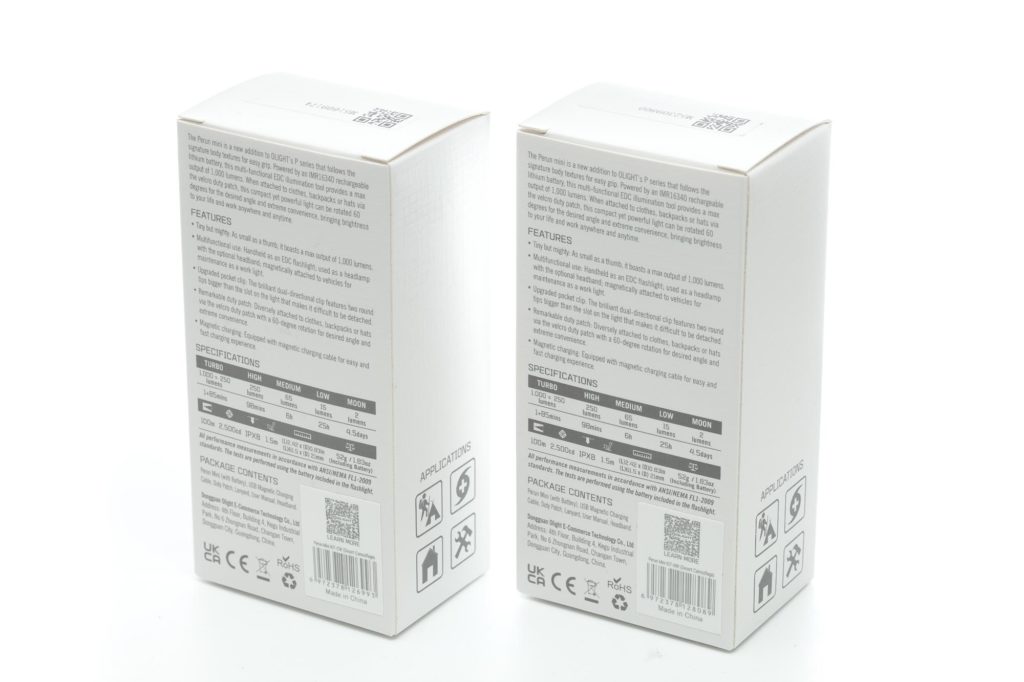
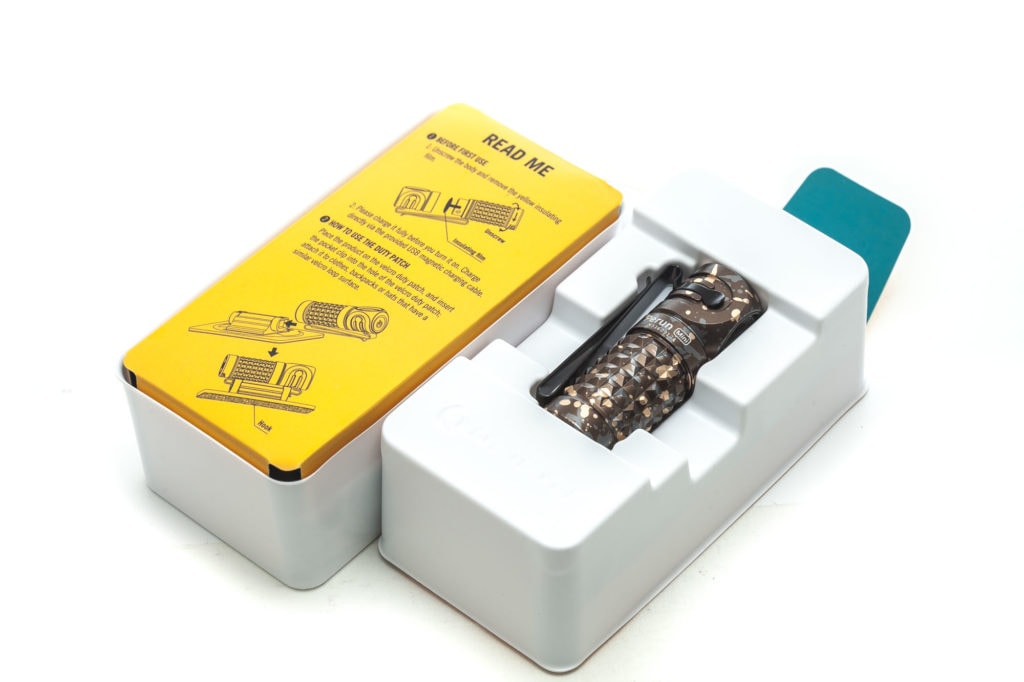
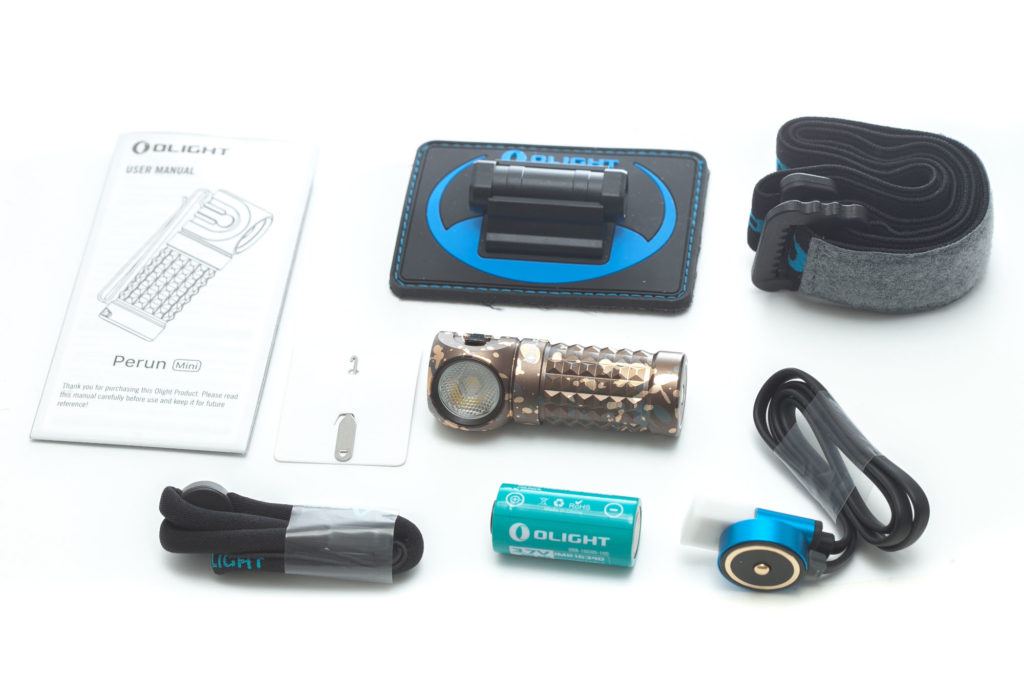
Flashlight in use
There are 2 main types of headlamp, the ones with the light source in the center (the traditional style) and the right-angle ones, like the Olight Perun Mini. The latter has a few benefits because you don’t really have to use it as a headlamp, you can also use it as a ‘normal’ flashlight.
The Perun Mini is pretty small and likely smaller than the average adult’s thumb.
Olight gives you about 6 ways to carry/use the Perun Mini.
- Use as a normal flashlight
- Use the lanyard for carrying
- Use the 2-way pocket clip
- Use the velcro duty patch, and stick it to a tactical helmet
- Use the headband, including the velcro duty patch as a headlamp
- Use the built in magnet in the tailcap to attach it to metal
Because of the multitude of ways to carry and use this light, you can basically use it for any close-up task, ranging from walking around the campsite, for work around the house, or just walking the dog at night. It’s very lightweight, so you can throw it in your backpack, and you won’t notice it because it’s only 50 grams / 1.85 oz.
There’s only 1 switch, located at the front of the light. It uses an electronic switch, with a faint click sound, but easy to use.
You don’t need to worry about the light rolling off an inclined surface because it doesn’t roll, not even with the pocket clip removed. And tailstand is no problem, especially if it’s standing on something metal (ferromagnetic metals).
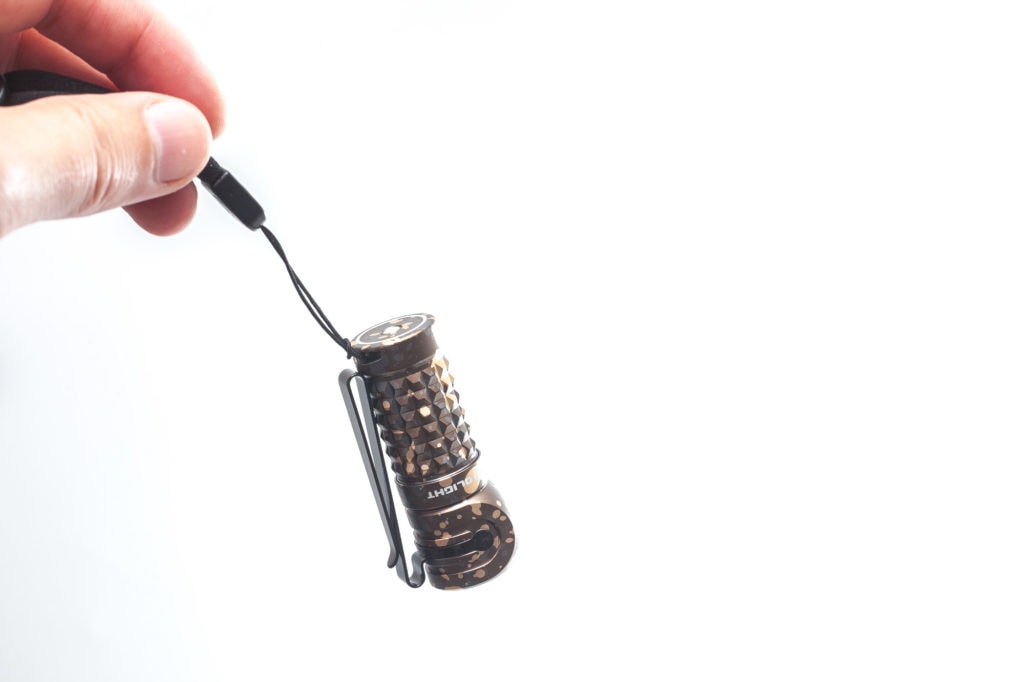
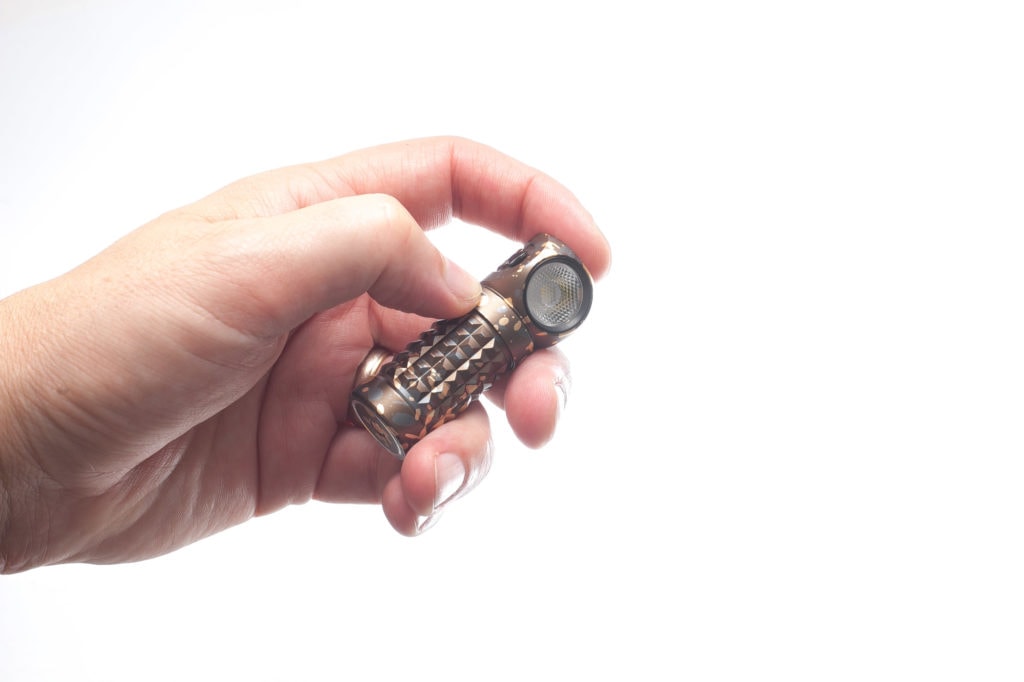
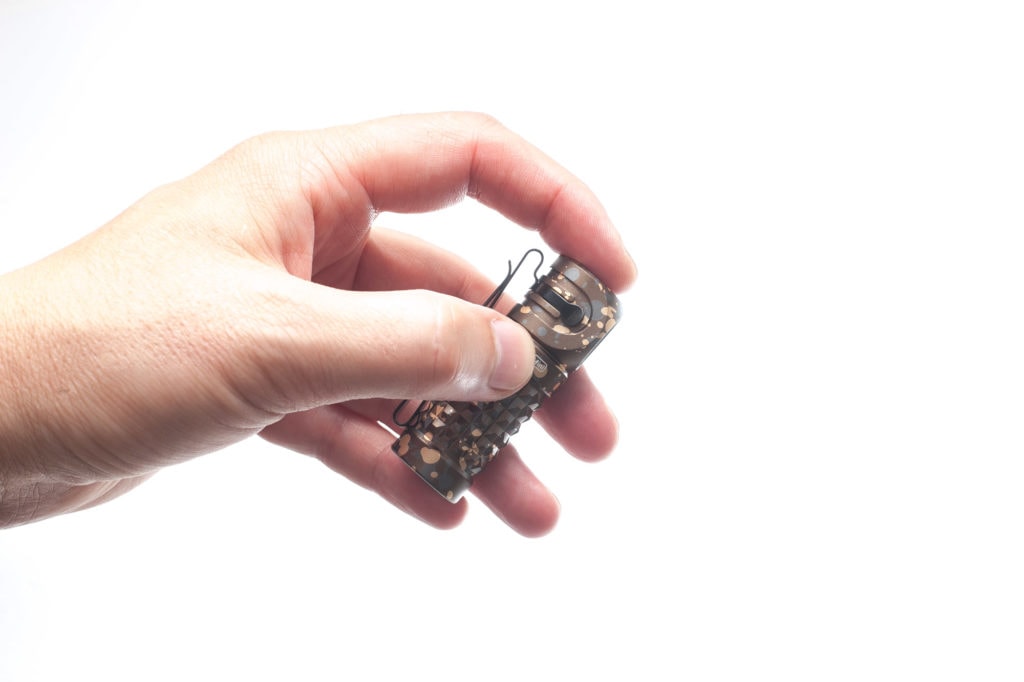
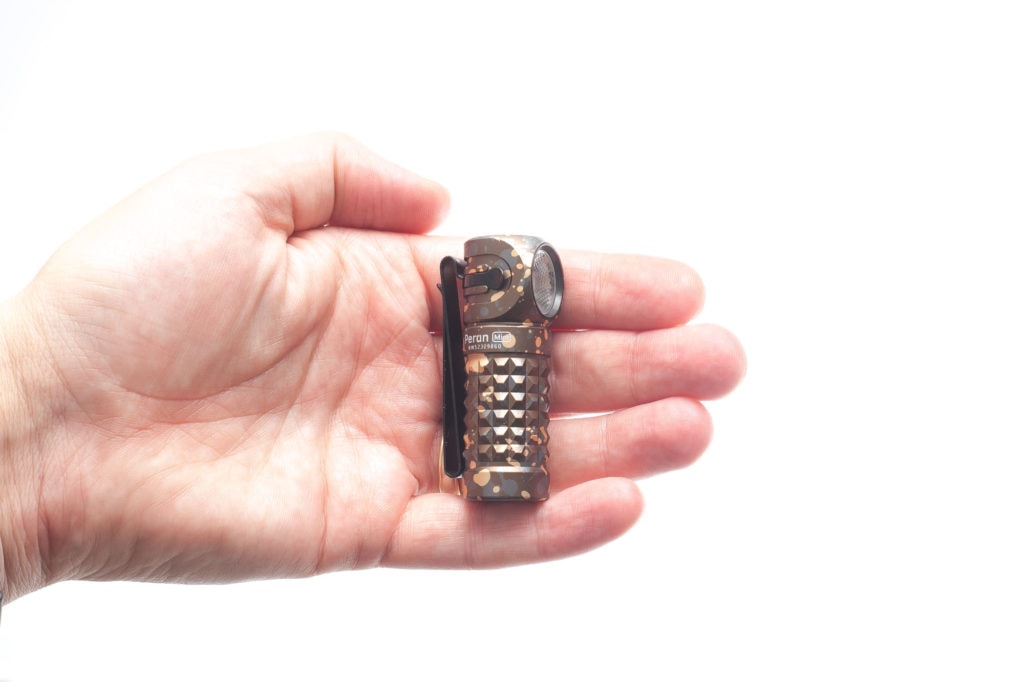
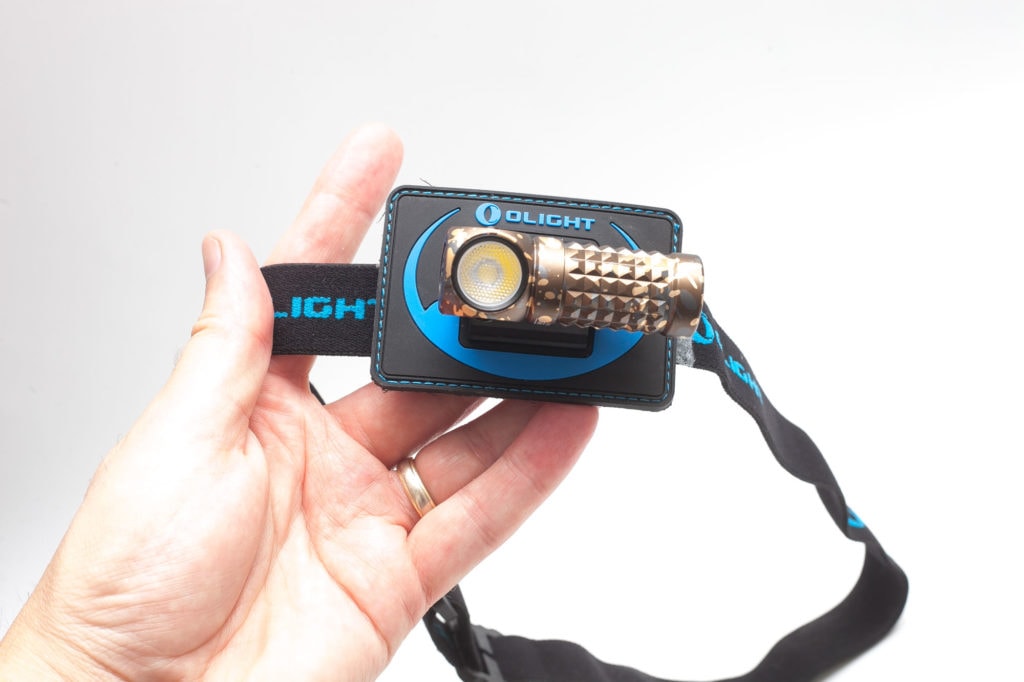
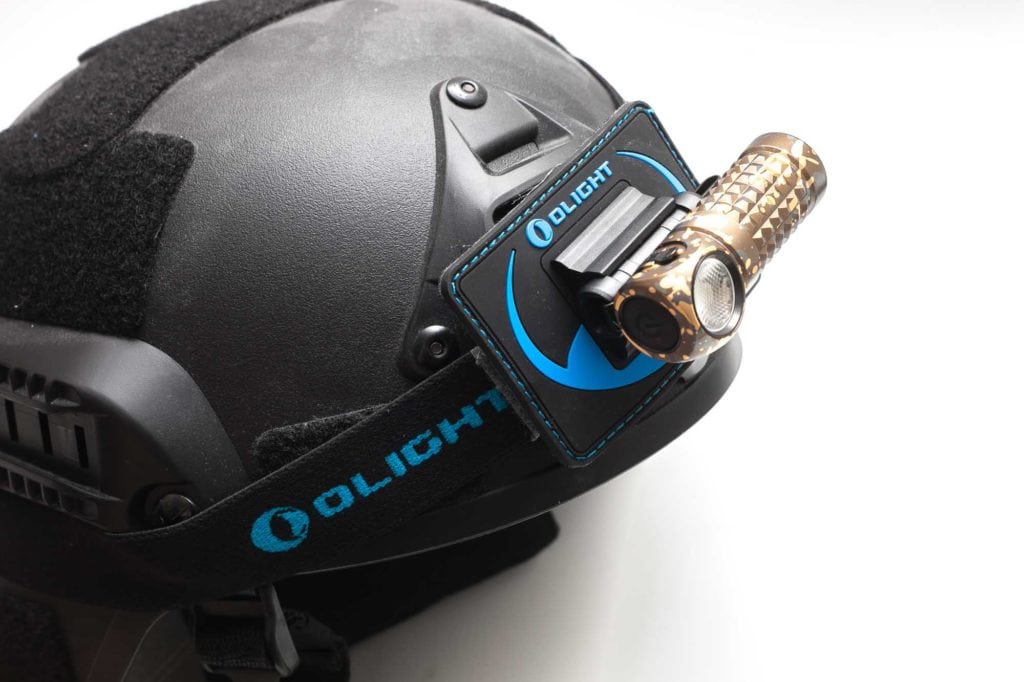
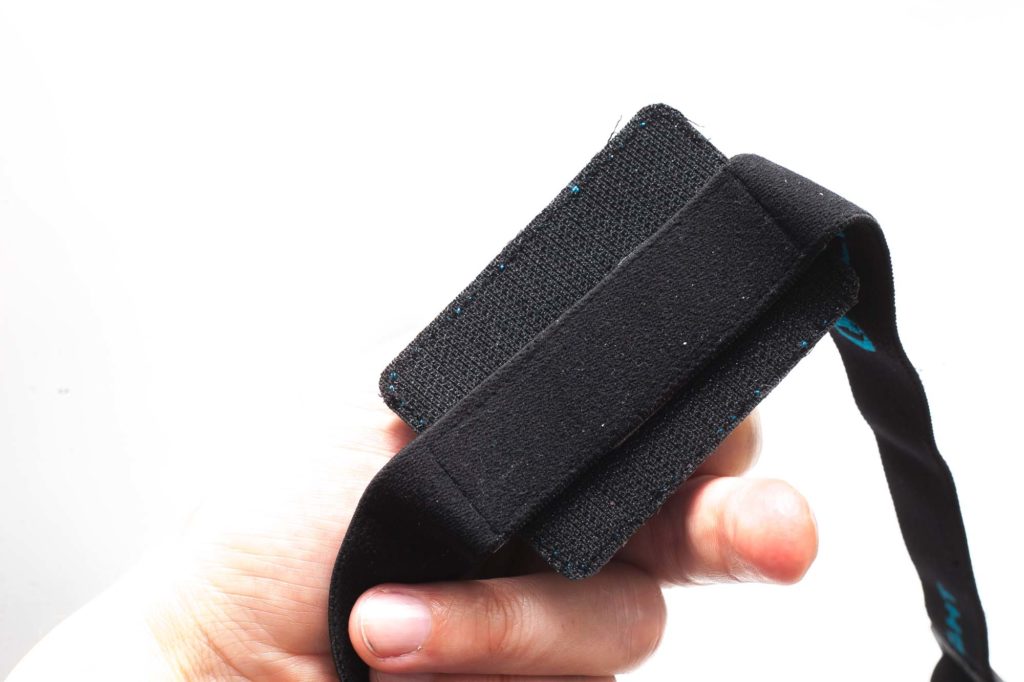
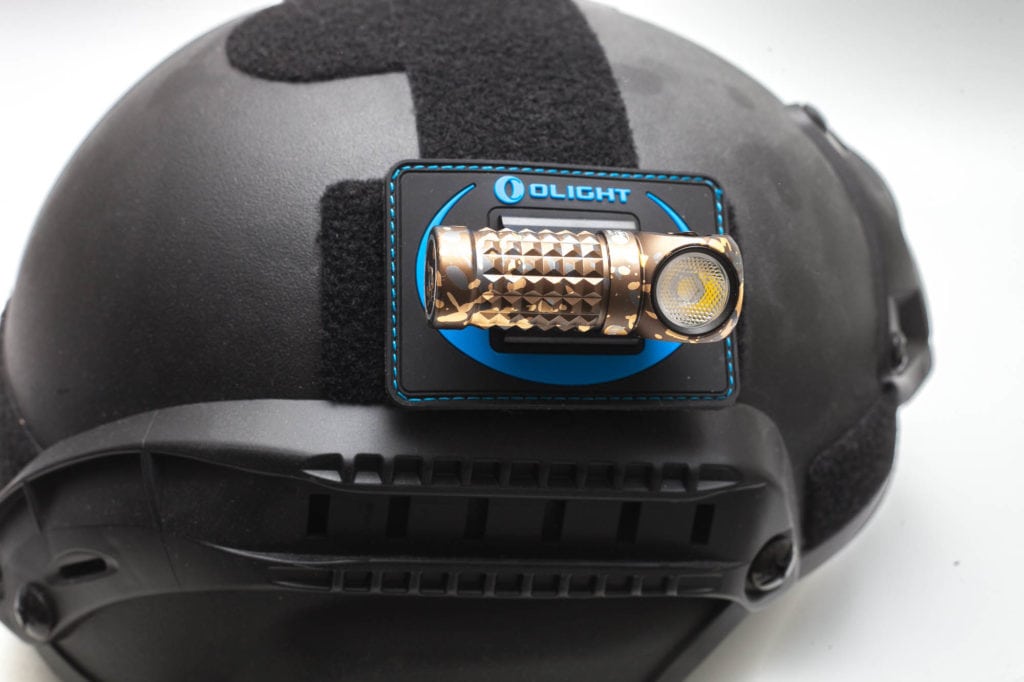
Build Quality, and Warranty
Olight never really disappoints when it comes to build quality and design. The Perun Mini isn’t really big, but Olight took care of the exterior and interior, including the packaging.
There is no real tailcap, so the batterytube is just 1 piece with the magnet at the bottom, which is used for the charging connector.
This particular model has the Desert Camouflage coating that looks very nice, but it’s not useful if you drop it. It will be hard to find. So if you want to blend in with nature, fine…. but if you drop it, good luck finding it back.
The pocket clip is almost as long as the flashlight itself, and is a two-way clip. It’s removable, but strong enough to not budge trying to remove it by hand.
Olightstore Warranty:
Orders can be returned for any reason within 30 days from the date the order was received. Returned items must be in the same condition, unworn and in the original packaging. Once you apply for a refund or replacement, we will send you a return label to return the item to us, no need to pay for the shipping cost. Free or promotional items must be returned along with the original item when being fully refunded.
Once your return is received, a refund will be processed, and a credit will automatically be applied to your original payment method. Please note that it might take 2-5 working days for a refund to show up on any bank statements. For your replacement, we will re-send a new item to you as soon as possible (within two weeks.)
For items purchased from third-party platforms within 30 days, we recommend you contact the original seller first, so they may take care of you. If you have any issues with them, please contact us.
Within 2 or 5 years of purchase: please contact our customer service at [email protected] or click here to apply for the warranty work. We may need your serial number, the date of purchase and a simple description about your issue. If your item needs to be returned for repair or replacement, we will provide you an RMA case number and application form to return the defective light together. You will need to cover the shipping cost, no need to pay for the repair.
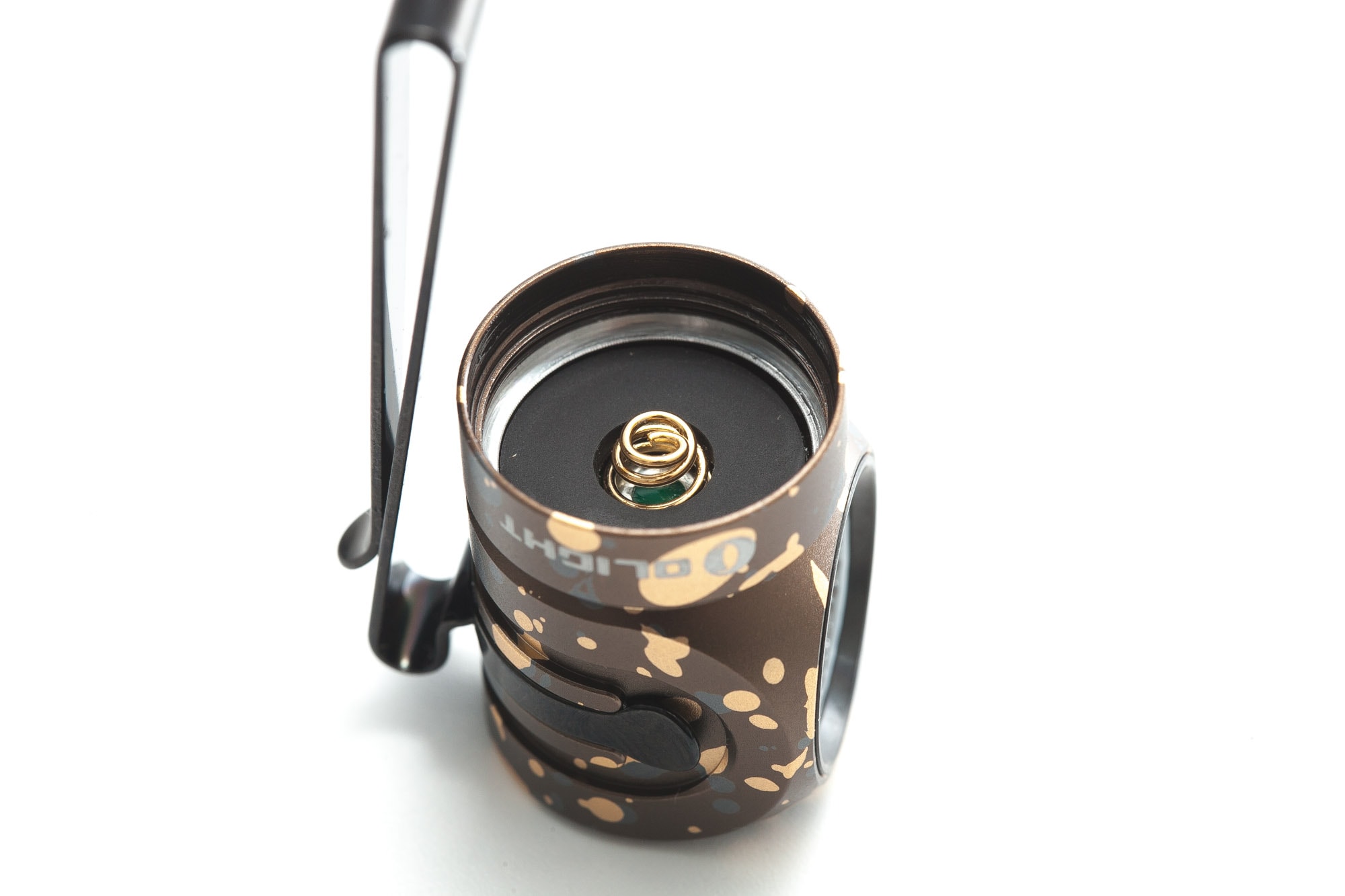
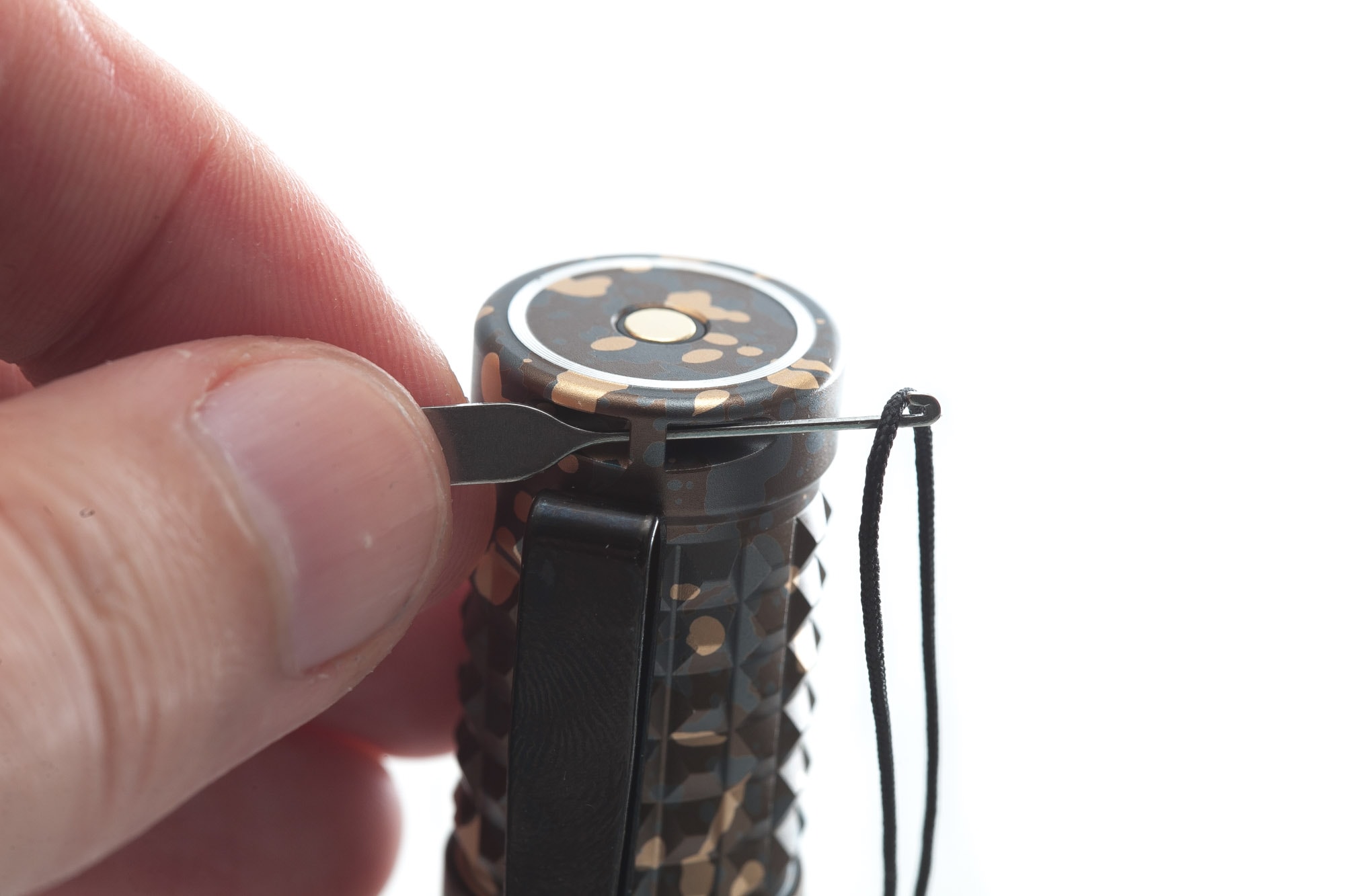
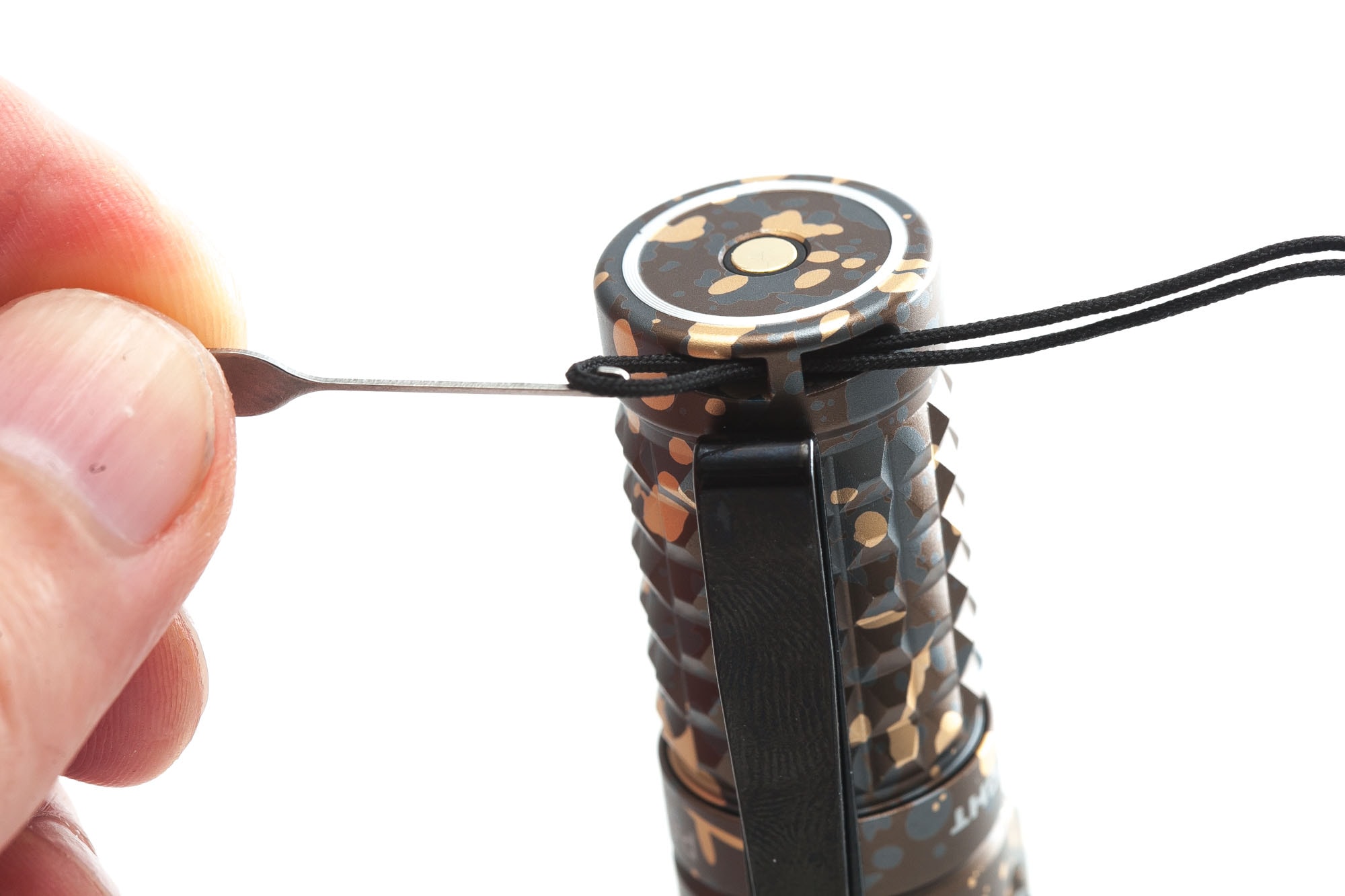

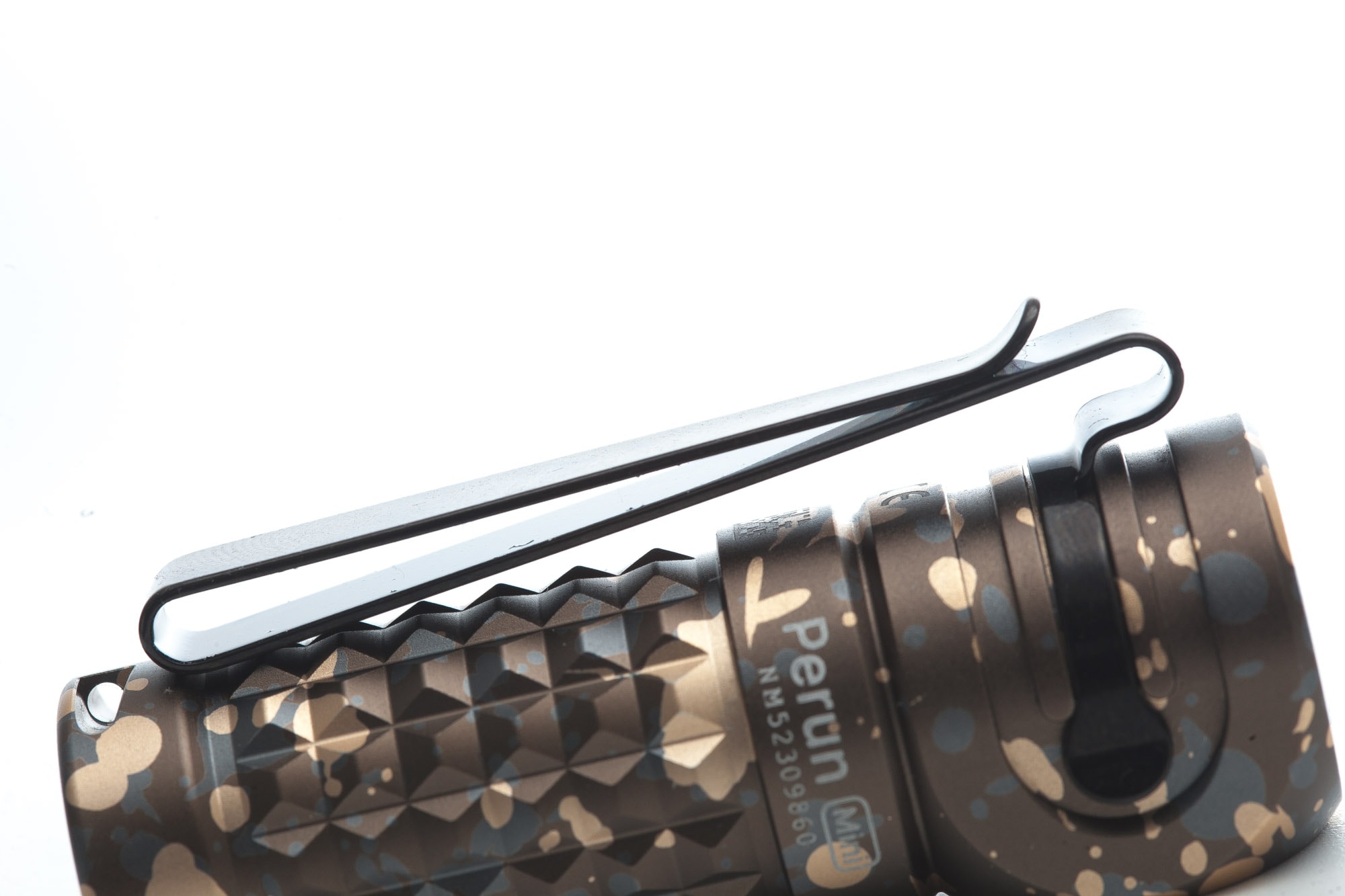
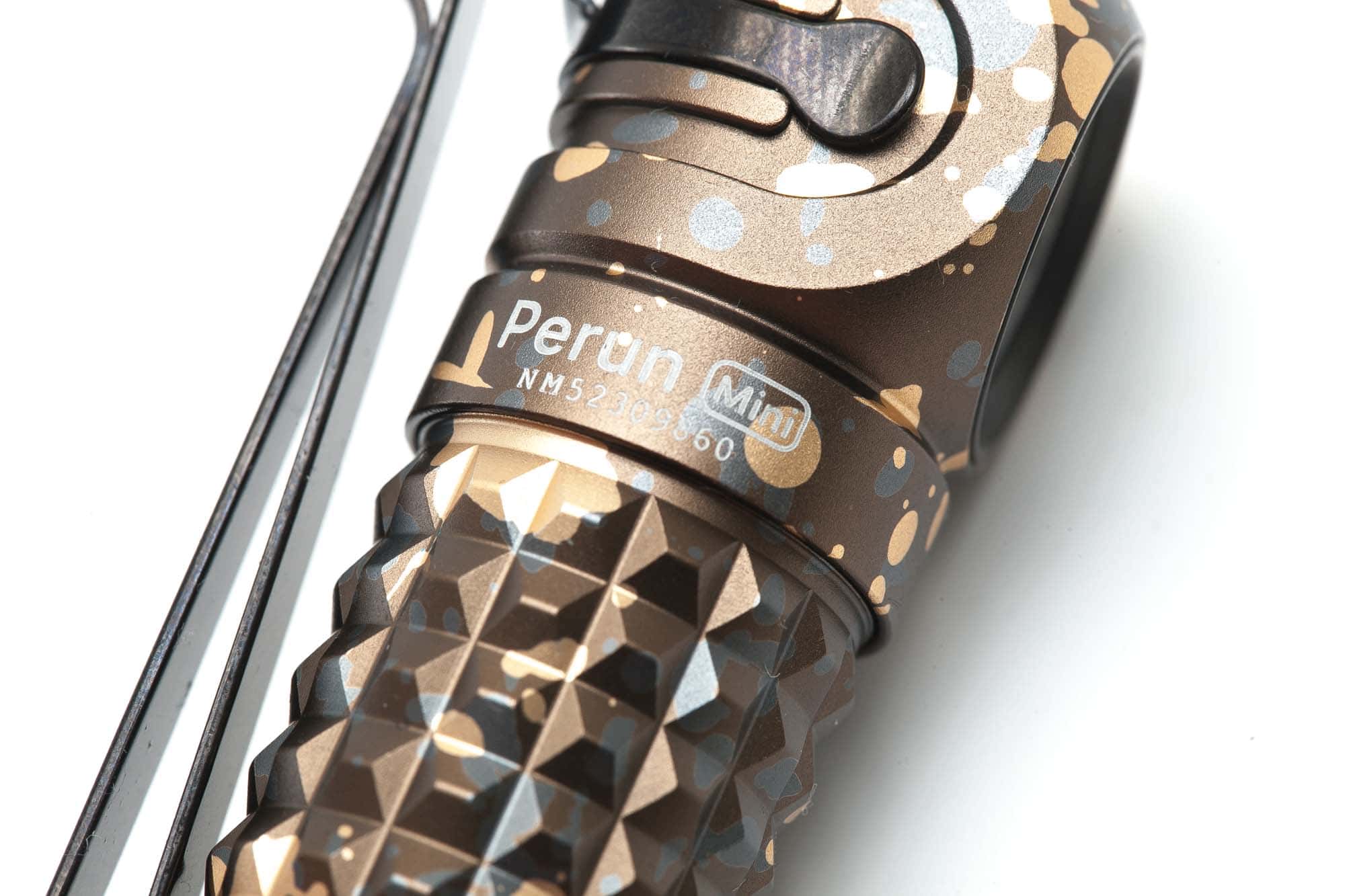
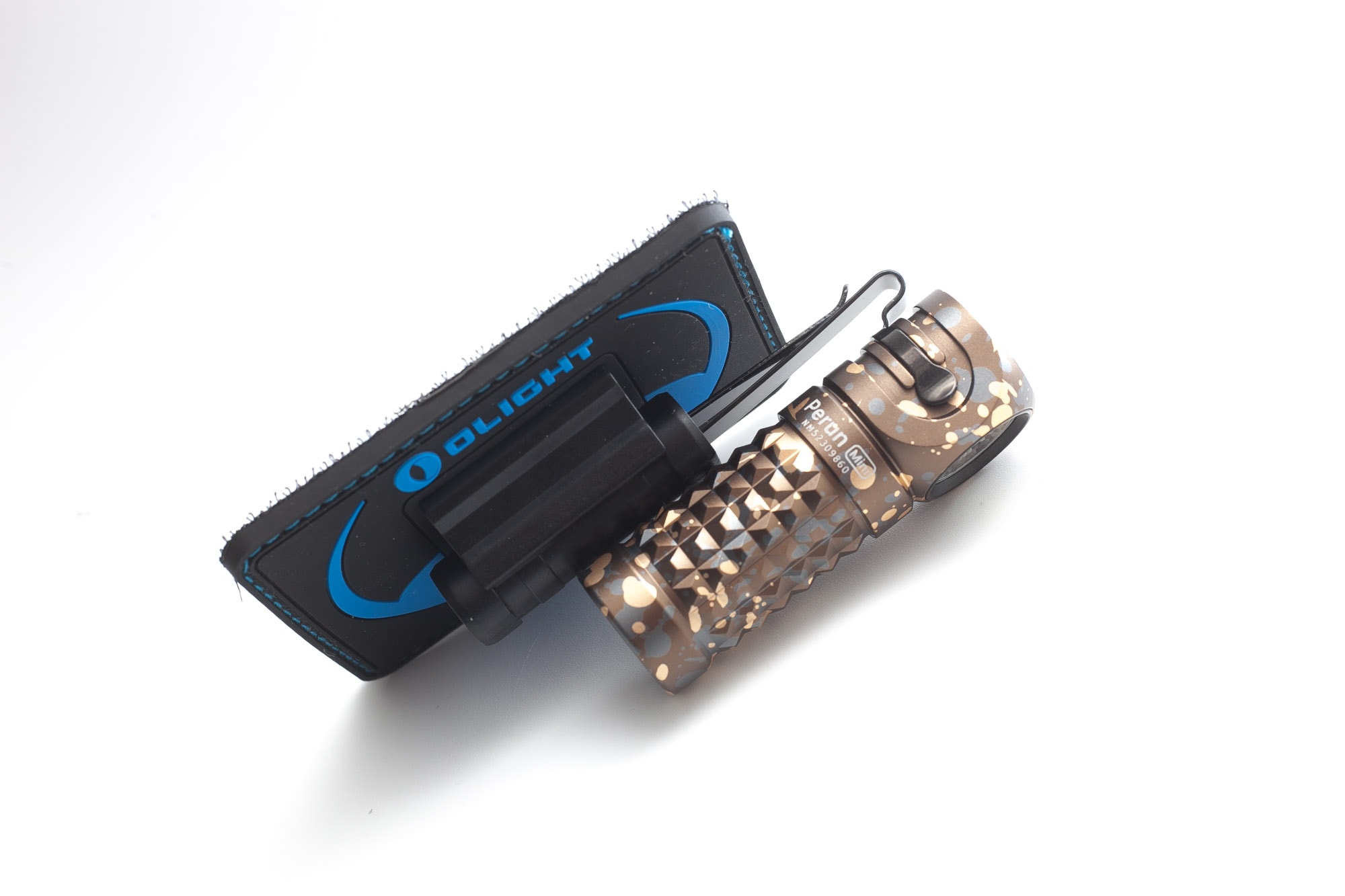
LED, Lens, Bezel, Beam, and Reflector
Olight offers 2 LED options, namely Cold white and Neutral white. I received both, so I will share both measurements.
It’s impossible to see the LED because of the TIR topic used. It has a honeycomb-type TIR optic, and the front is actually not flat, but dented. And the center has a little bump.
There is a ring (bezel) keeping the optic in place, and it’s probably press fit.
The beam itself is pretty floody, with a smooth transition between the ‘hotspot’ and spill. It doesn’t look like your typical hotspot because it’s very floody, but the center is clearly brighter than the edges. It’s a rather pleasant beam to look at.
I used the Opple Light Master III to test the light’s color temperature and CRI (Ra).
Here’s the data for the CW version in High and Turbo mode:
| High mode | Turbo mode |
|---|---|
| CCT: 6098K | CCT: 6356K |
| CRI (Ra): 70 | CRI (Ra): 70.9 |
| DUV: 0.0030 | DUV: 0.0015 |
I also tested the same settings (High and Turbo) for the NW setting.
| High mode | Turbo mode |
|---|---|
| CCT: 4786K | CCT: 4916K |
| CRI (Ra): 67.1 | CRI (Ra): 68.4 |
| DUV: 0.0046 | DUV: 0.0026 |
I noticed during testing, that I couldn’t tell whether I had the NW version or CW version in my hand without turning it on. I charged the cells in a normal charger, to speed things up, and because I don’t like to have these magnetic charging cables laying around.
I normally don’t have this problem, because I would only have 1 LED version. But this time it dawened upon me that most manufacturers don’t mention the type of LED anywhere on the light. So, there is no way of knowing what version you have in front of you. There is however a difference between a visible LED and with this type of TIR optic. With a reflector you can see the color difference of the LED. The darker the phosphor, the warmer the tint, and vice versa. So this is not specifically an Olight issue.
Olight sometimes adds the CCT values on the bezel, but not this time.
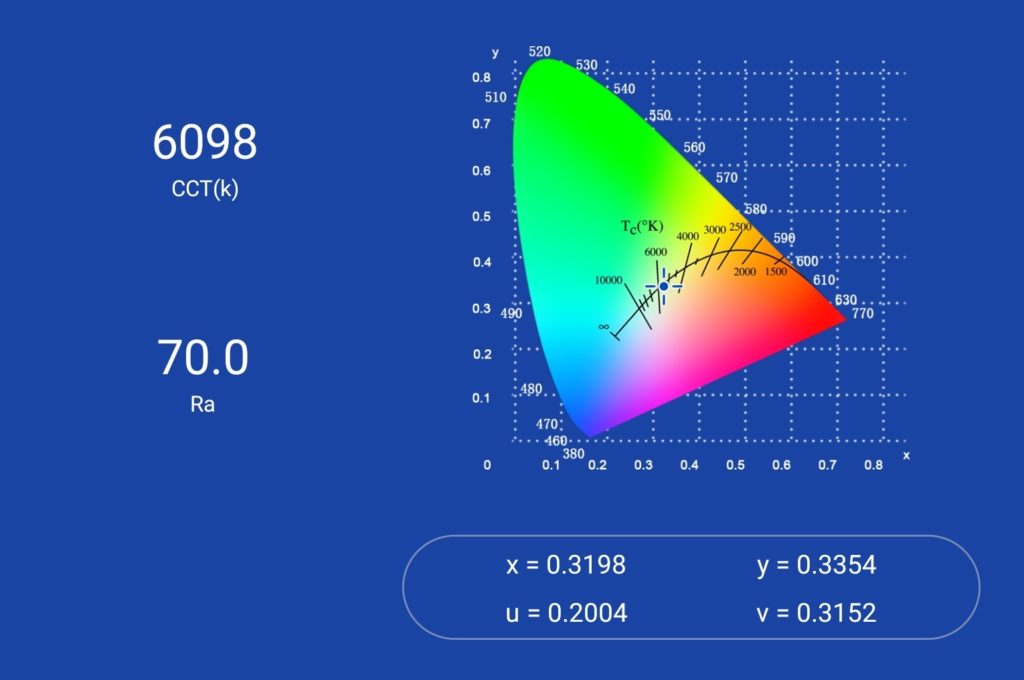

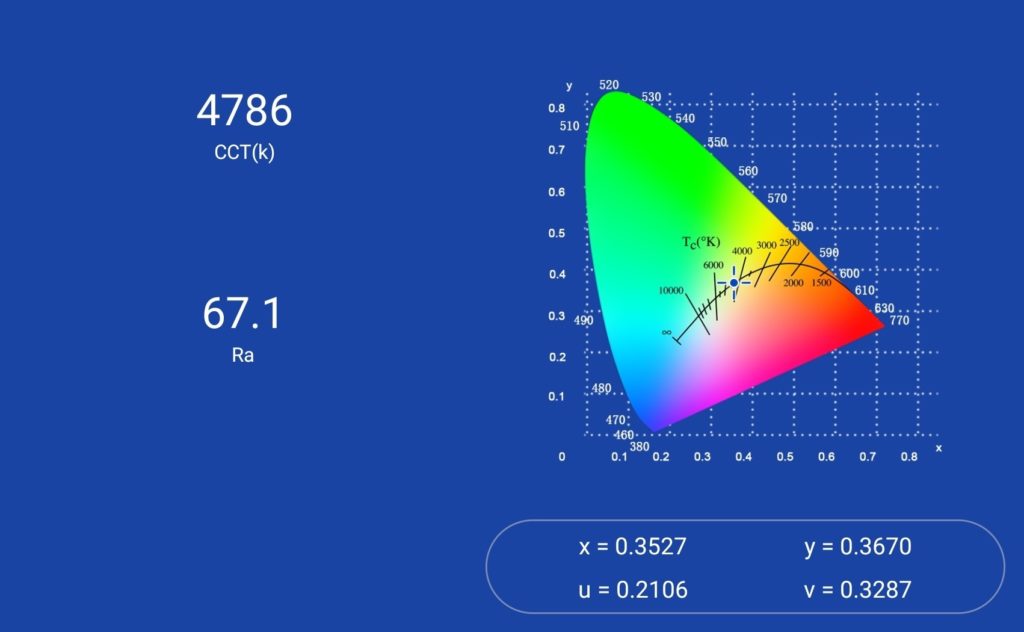
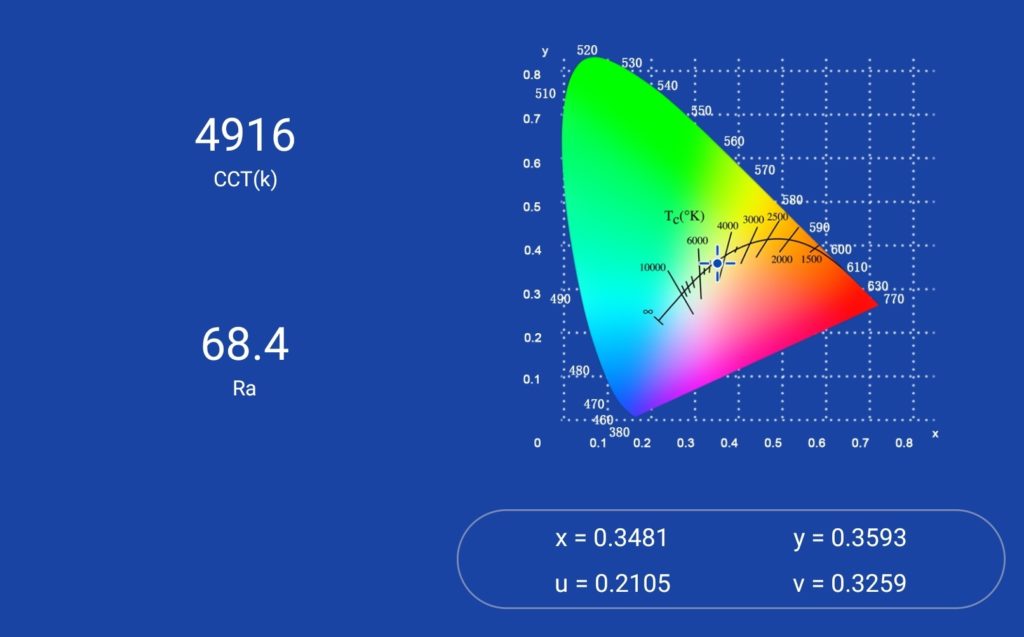
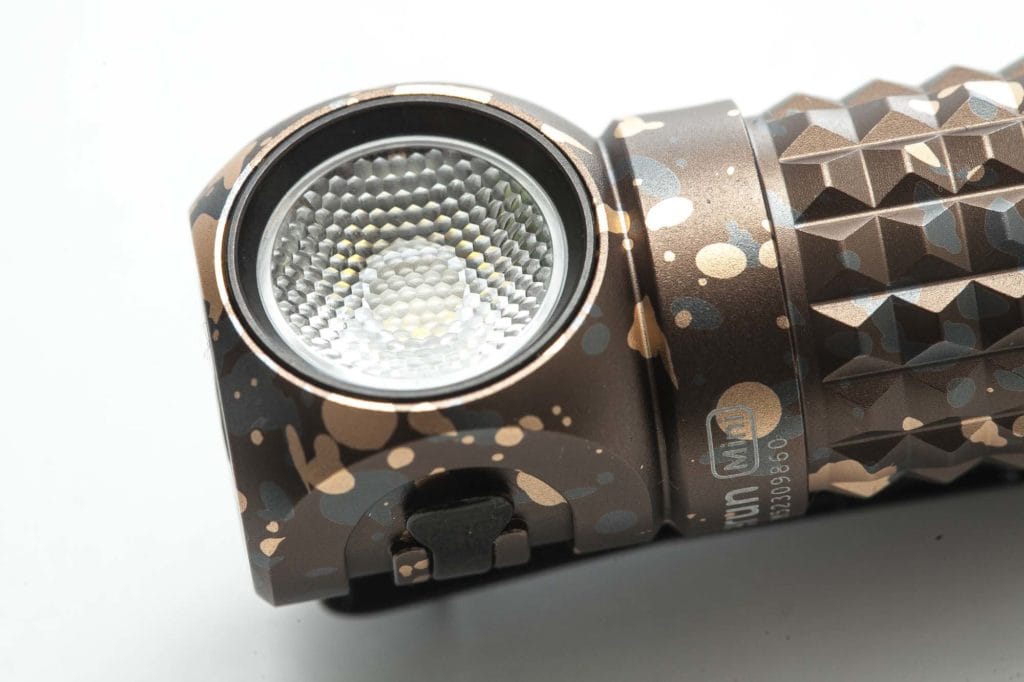
Dimensions and size comparison
Dimensions:
| Millimeters | Inches | |
|---|---|---|
| Length | 61.7 mm | 2.43 “ |
| Head diameter side | 21 mm | 0.83 |
| Tailcap diameter | 20.7 mm | 0.814″ |
Weight:
| Weight in grams | Weight in Oz. | |
|---|---|---|
| Without battery: | 33.7 grams | 1.19 |
| With battery | 52.5 grams | 1.85 |
Flashlight size comparison
Size compared to other Olight flashlights
From left to right: Olight Warrior Mini 2, Olight S2R Baton, Olight s1r baton III special edition, Olight s1r baton III, Olight Perun Mini, Olight 16340 battery
Size compared to other right-angle lights
From left to right: Acebeam P40, Armytek Wizard C2 PRO Max, Armytek Wizer C2 PRO, FireFlies PL47g2, Amutorch AL2, Manker E03H II, Olight Perun Mini.
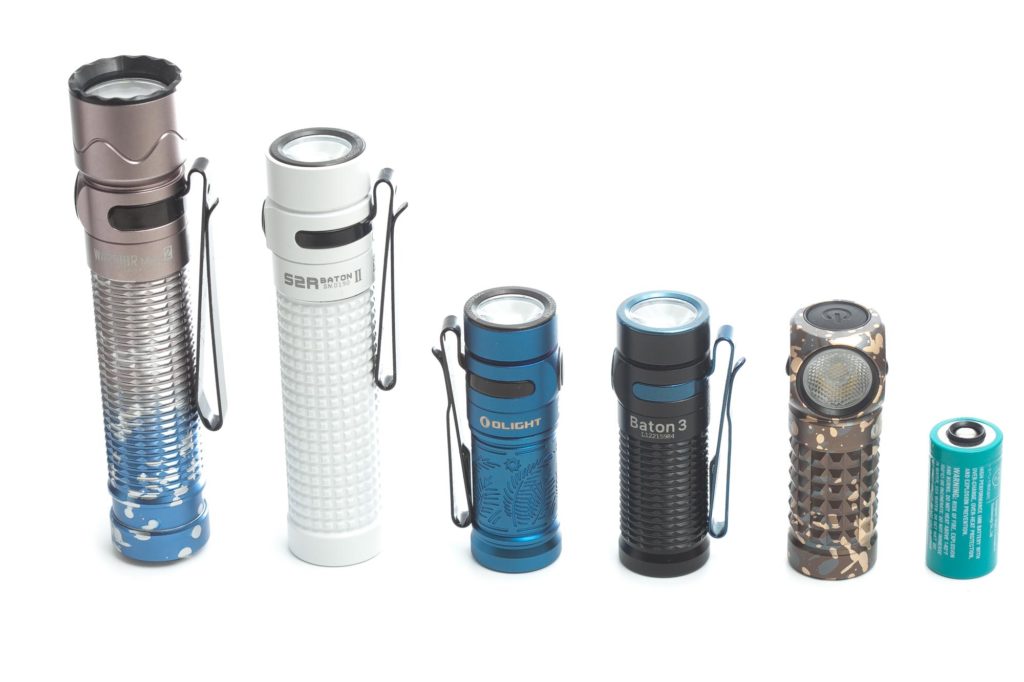
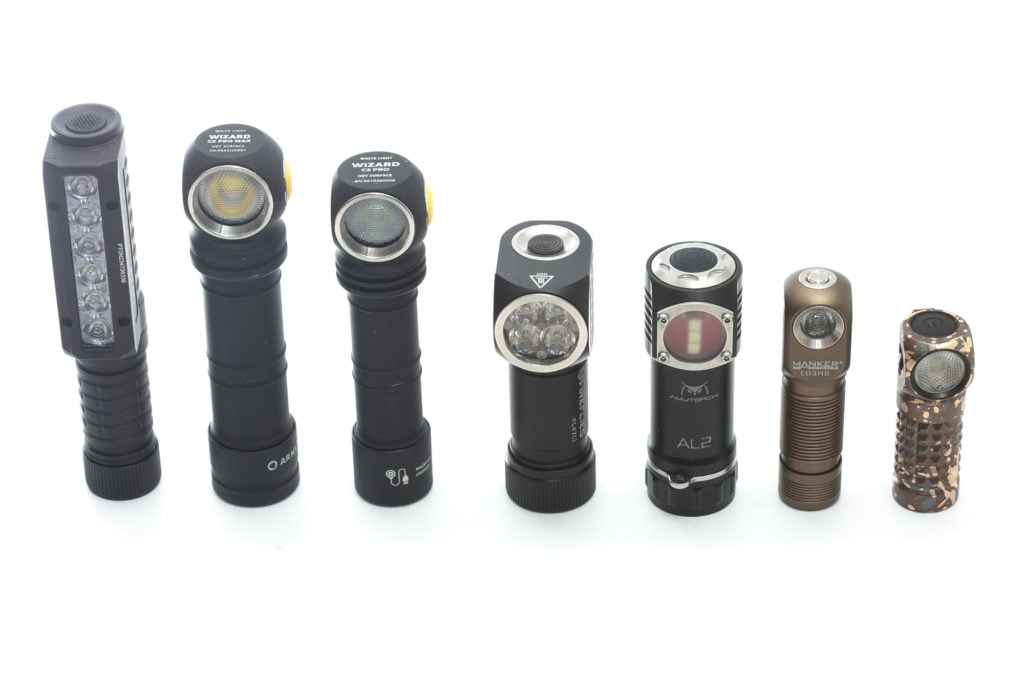
Driver & User Interface:
Here’s how the firmware works.
Available modes:
- 5: Moon, Low, Medium, High, Turbo
- SOS
From OFF:
- Single-click: to last used mode, mode memory
- Double click: Turbo
- Triple-click: SOS
- Press and hold less than 2 sec: Moon
- Press and hold more than 2 sec: Lockout (long press again to deactivate)
From ON:
- Single-click: turns off
- Double click: Turbo
- Triple-click: SOS (highest output SOS only)
- Press and hold: toggle between main modes: Low, Medium, and High. (No moon mode, and Turbo mode)
Shortcuts:
- To Turbo: double click from On and Off
- To Moon: Long press from Off
- To Strobe: 3-clicks from On and Off
Sleep timer:
- To activate the sleep timer, you have to do a double click while holding the switch at the second click. In the Anduril manual, this is shown as 2H (2 clicks and hold the switch pressed at the second click). This doesn’t mean that the output reduces slowly, but it will just turn off at either 3 minutes or 9 minutes.
- When you activate the sleep timer, you see 1 blink (for 3 minutes) or 2 blinks (for 9 minutes). Just turn the light off to de-activate the timer.
- If you use the timer in Turbo, you will notice a decrease in output after 1 minute, because that’s the normal output drop.
Blinky modes menu:
- Only SOS. Enter this mode with a triple click.
Low battery warning:
- Not that I noticed in the graph etc.
Lock-out mode:
- Yes, you can access the electronic lock-out mode with a long-press from off (it first turns on in Moon, and then turns off, which indicates lockout mode is activated)
PWM:
- Yes, but not very visible in lowest modes
Firmware / UI Conclusion:
The UI is pretty easy and comfortable to use
Batteries & Charging
Batteries arrived at 3.7V, and charges up to 4.18V. I usually charge these batteries in a normal charger, so I don’t really use the charging cable that often. You have to insert the battery with the negative terminal towards the head, so the opposite of a normal flashlight.
You’d probably think you can’t use a normal 16340 battery in this light, and you’re wrong. You can use normal, short 16340 batteries, but you can’t charge it loaded in the flashlight. I’m not 100% sure if that would void warranty, but it doesn’t seem to be.
Charging a completely drained battery with the Magnetic charge cable takes 1 hour. (see picture below)
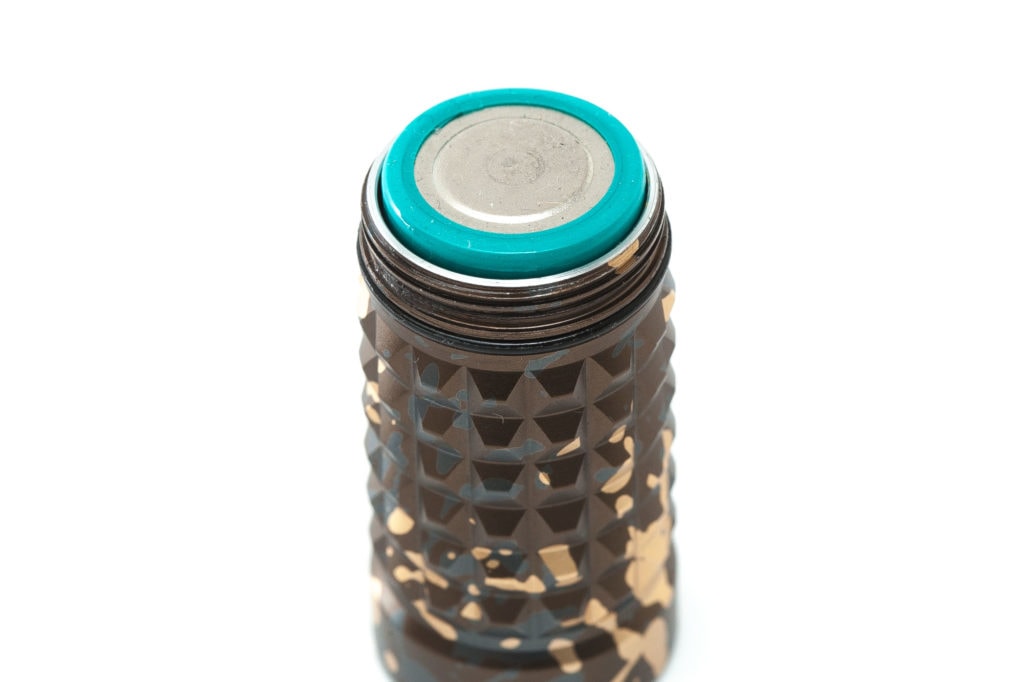
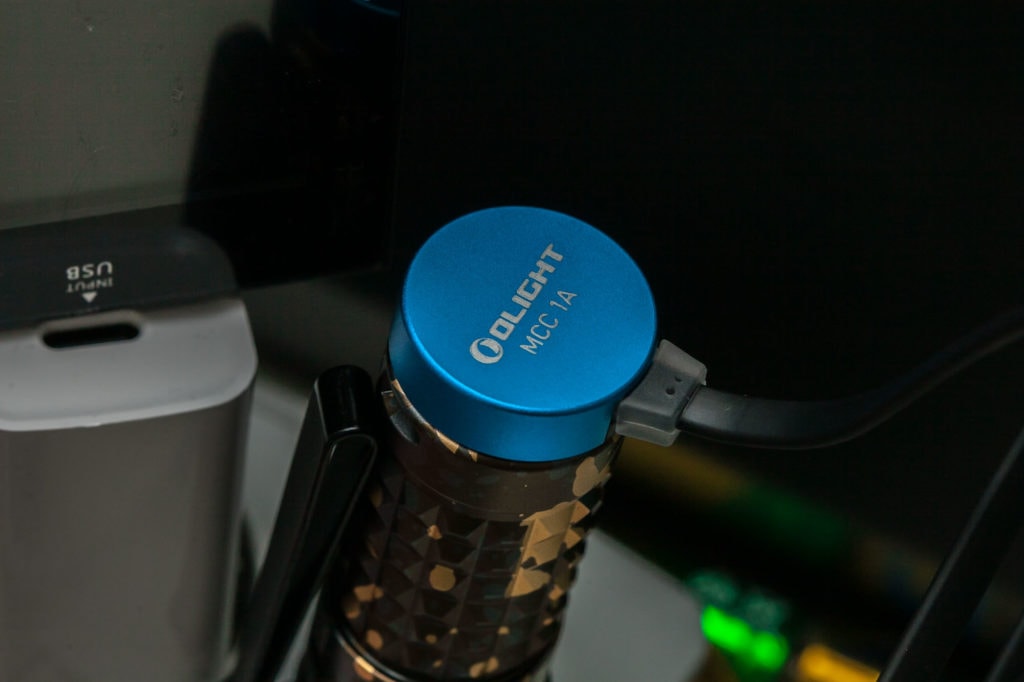
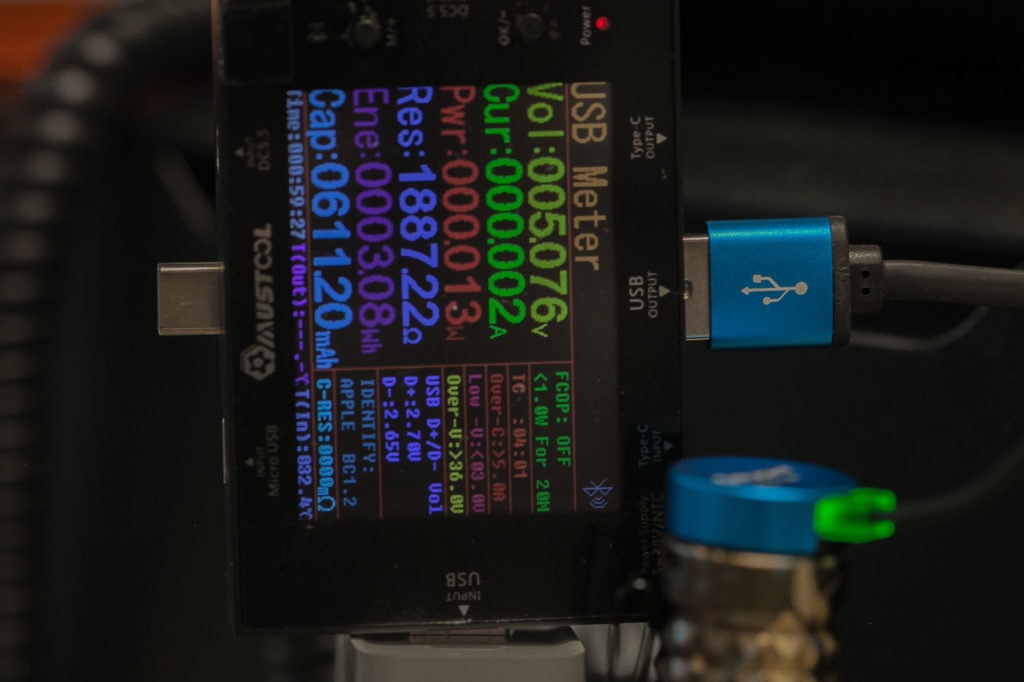
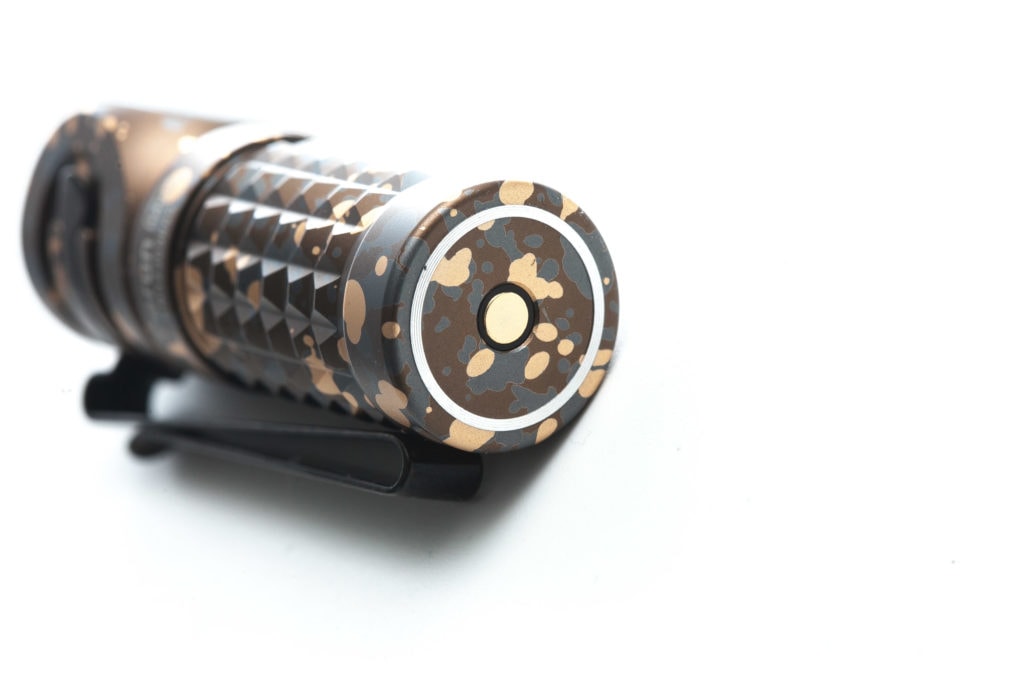
Testing the Olight ORB-16C05-10C
I tested the 2 batteries that were included with my 2 lights, in my SkyRC MC3000 charger, and discharged a fully charged battery, and charged a discharged battery.
It’s interesting to note that the battery is spec’d at 550mAh, but in reality does more than 670mAh. You can see the following discharge curve, as well as the overview of the charge and discharge.
Both are the same battery.
During the capacity check, I set the discharge current at 500mA and the cutoff voltage at 2.85V. As soon as the charger discharged it to 2.85V, it stopped the discharge, and the Voltage jumped back up to about 3.21V. It even recovered to 3.26V within a couple of minutes.
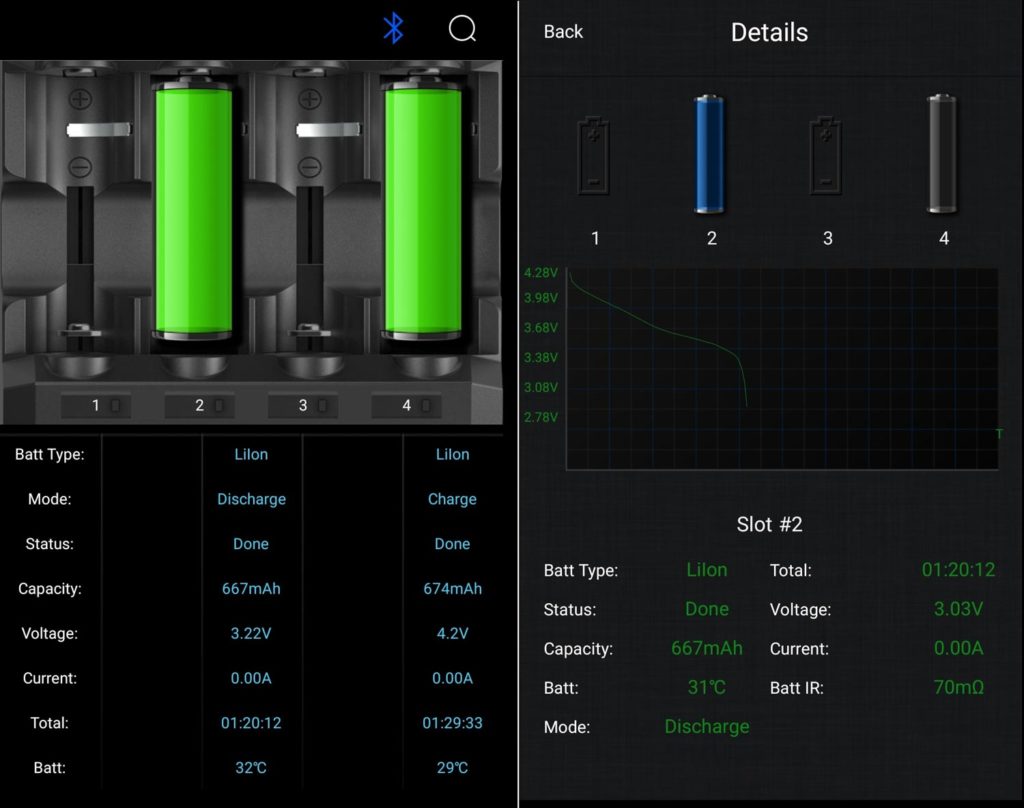
Performance test
During the testing I wouldn’t know whether I had the CW or NW in front of me.. There is no mention of it on the light. I think a small icon or something would have been nice. If you only have 1 model, you wouldn’t know of course, but if you have both, you have to turn it on in order to know whether it’s CW or NW.
Lumen measurements:
All output numbers are relative to my homemade Integrating Sphere. It is set up with an Extech SDL400 Lux Meter for measurements including a Kenko PRO1D ND-16 filter. The base measurement is done with a Convoy S2+ that has been tested at 255 lumens.
All of my readings were taken from a fully-charged Olight ORB-16C05-10C.
Perun Mini with cool white emitter
| COOL WHITE | Specs | turn on | 30 sec |
|---|---|---|---|
| Moon | 2 lm | 1.63 | 1.63 |
| Low | 15 lm | 14.20 | 14.20 |
| Med | 65 lm | 58 | 57 |
| High | 250 lm | 239 | 238 |
| Turbo | 1000 lm | 991 lm | 975 |
And with the Neutral white emitter
| NEUTRAL WHITE | Specs | turn on | 30 sec | 10 min |
|---|---|---|---|---|
| Moon | 2 lm | 1.66 | 1.66 | – |
| Low | 15 lm | 15 | 15 | 15 |
| Med | 65 lm | 60 | 60 | 60 |
| High | 250 lm | 246 | 246 | 245 |
| Turbo | 1000 lm | 1006 lm | 999.88 lm | 245 |
Parasitic drain:
- Can’t measure.
Runtime: Battery life
The runtime test was done with the 50cm integrating sphere, including the Kenko Pro1D ND-16 filter and Extech SDL400 data logging Lux Meter.
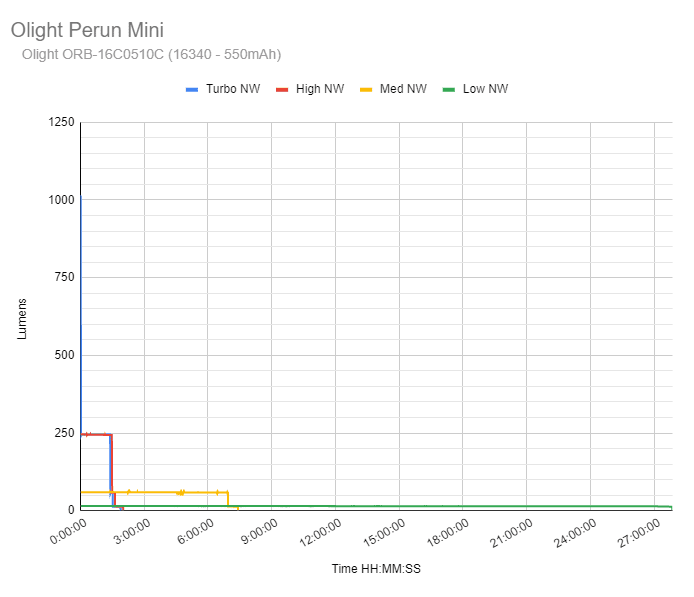

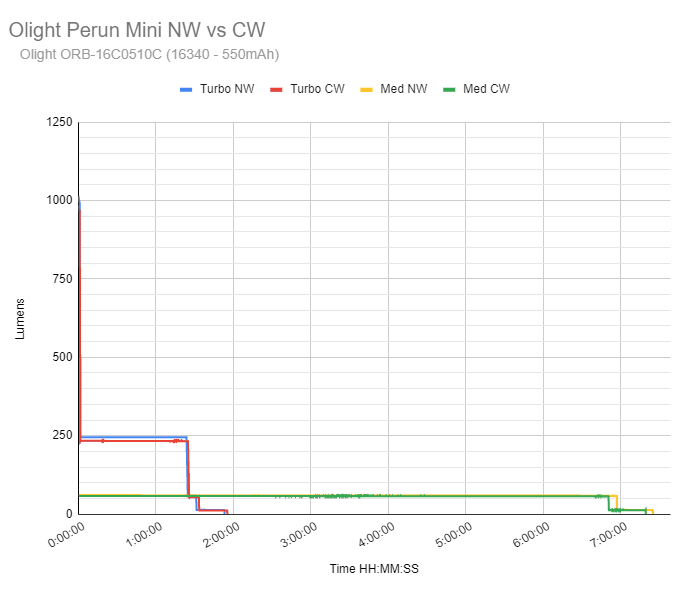
I did 4 runtime tests with the NW version, and 2 with the CW version to see if there is any significant difference. You can see the comparison of Turbo mode and Medium mode for both versions, in the last graph.
| Mode | Specified | Measured runtime (ANSI FL1) | Time till shut off |
|---|---|---|---|
| Moon | 4.5 days | – | – |
| Low | 25h | 27h 51min | 27h 51min |
| Med | 6h | 7h 24min | 7h 24min |
| High | 1h 38min | 1h 37min | 2h 01min |
| Turbo* | 1h 26min | 1h 24min | 1h 53min |
ANSI FL1 standards: The runtime is measured until the light drops to 10% of its initial output (30 seconds after turn on). This does not mean that the flashlight is not usable anymore. The last column shows how long the light actually works, till it shuts off. If there is a + symbol, it means that the test was stopped at that particular point, but the light was actually still running. This happens on certain occasions, with certain drivers, firmware, or batteries.
Throw Measurement: Peak beam intensity and beam distance
Measurements were taken indoors at 5 meters with a Hagner E4-X Lux Meter. (30 seconds after turn on)
| Specs | Measured | Meters | Yards | |
|---|---|---|---|---|
| CW Med | – | 150 cd | 24 | 27 |
| CW High | – | 650 cd | 51 | 56 |
| CW Turbo | 2,500 cd | 2,700 cd | 104 | 114 |
| NW Med | – | 150 cd | 24 | 27 |
| NW High | – | 675 cd | 52 | 57 |
| NW Turbo | 2,500 cd | 2,750 cd | 105 | 115 |
Low and Moon modes were too weak to give any useful data at 5 meters.
Extra info: Peak beam distance according to ANSI FL1 standards: The calculated value of distance in meters at which the flashlight produce a light intensity of 0.25 lux. (0.25 lux is about the brightness of a full moon shining on an object).
Beamshots
For the following beamshots I used a Canon EOS 5D Mk2 and a 50mm lens. manual settings: ISO1600, 1/4sec , F4, 5000K
The shed is about 65 meters / 71 yards away.
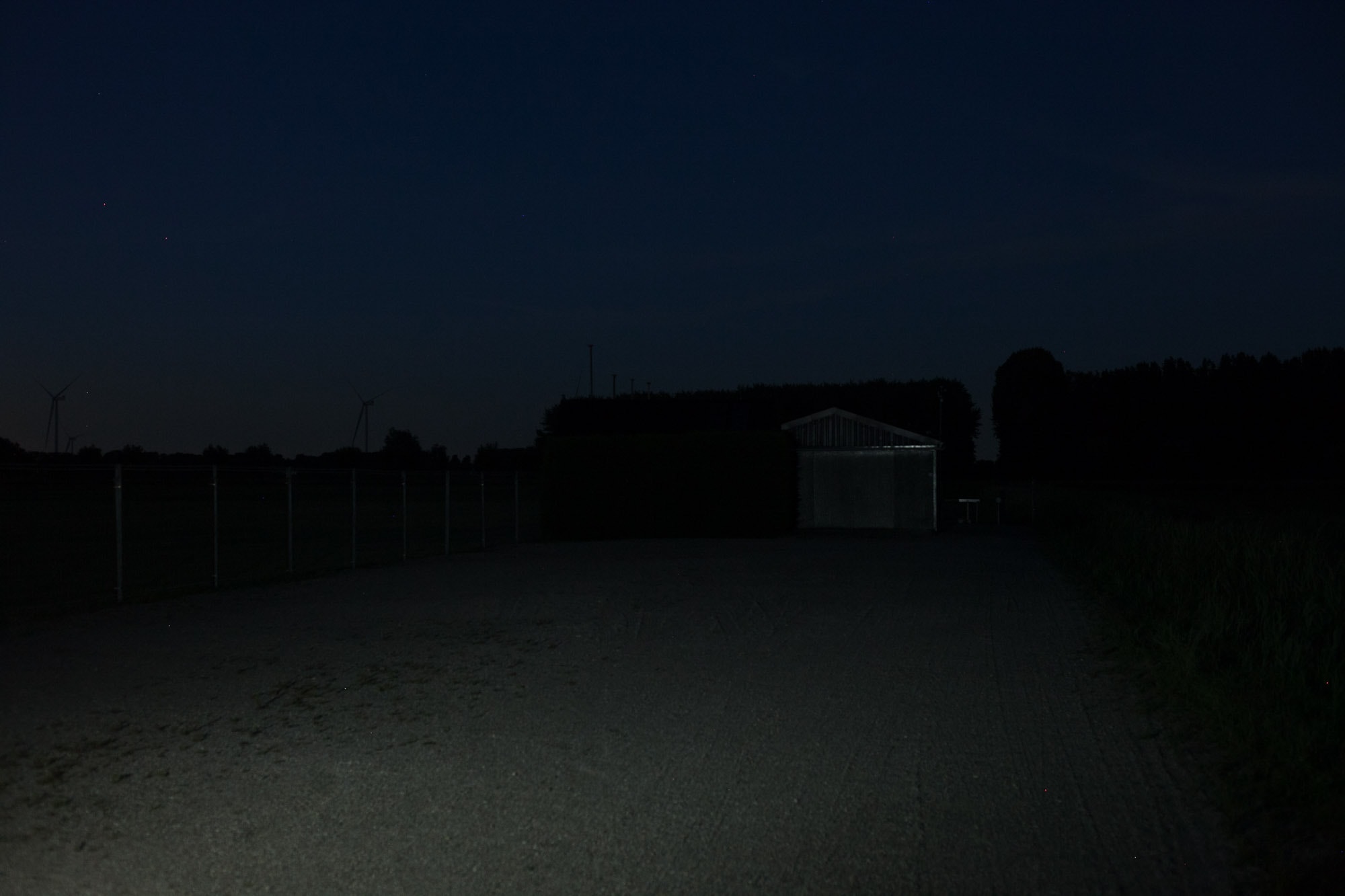
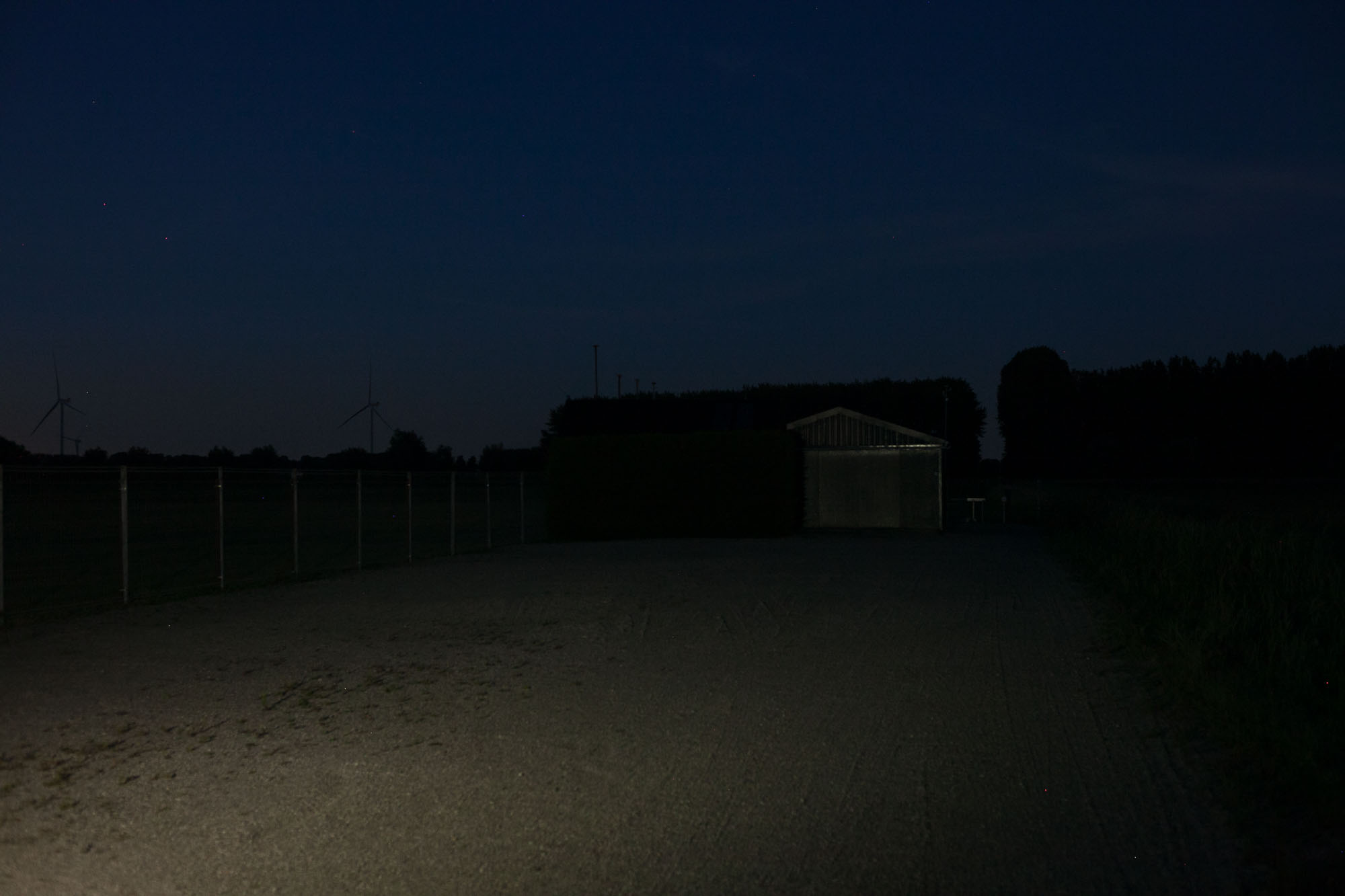
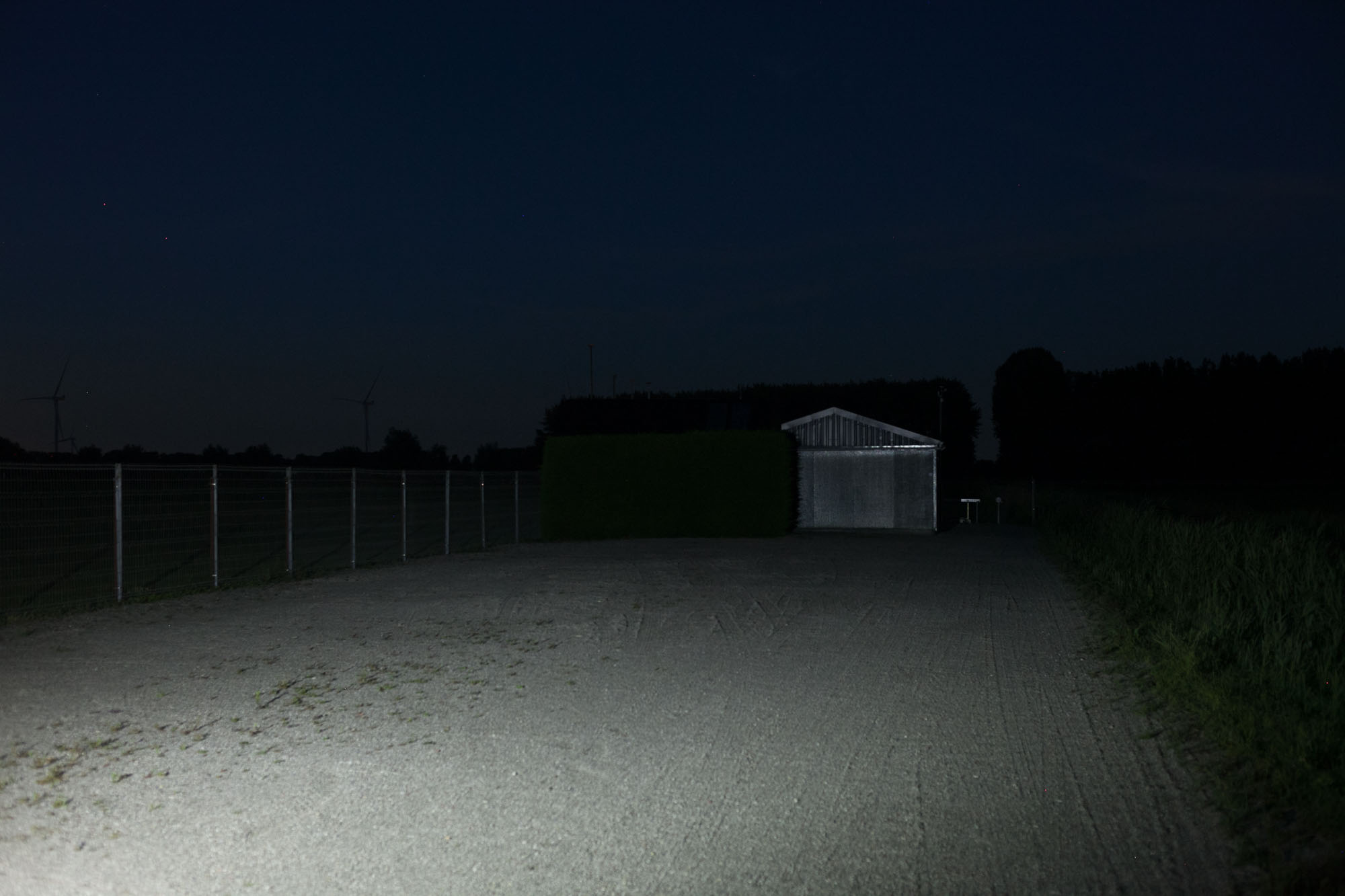
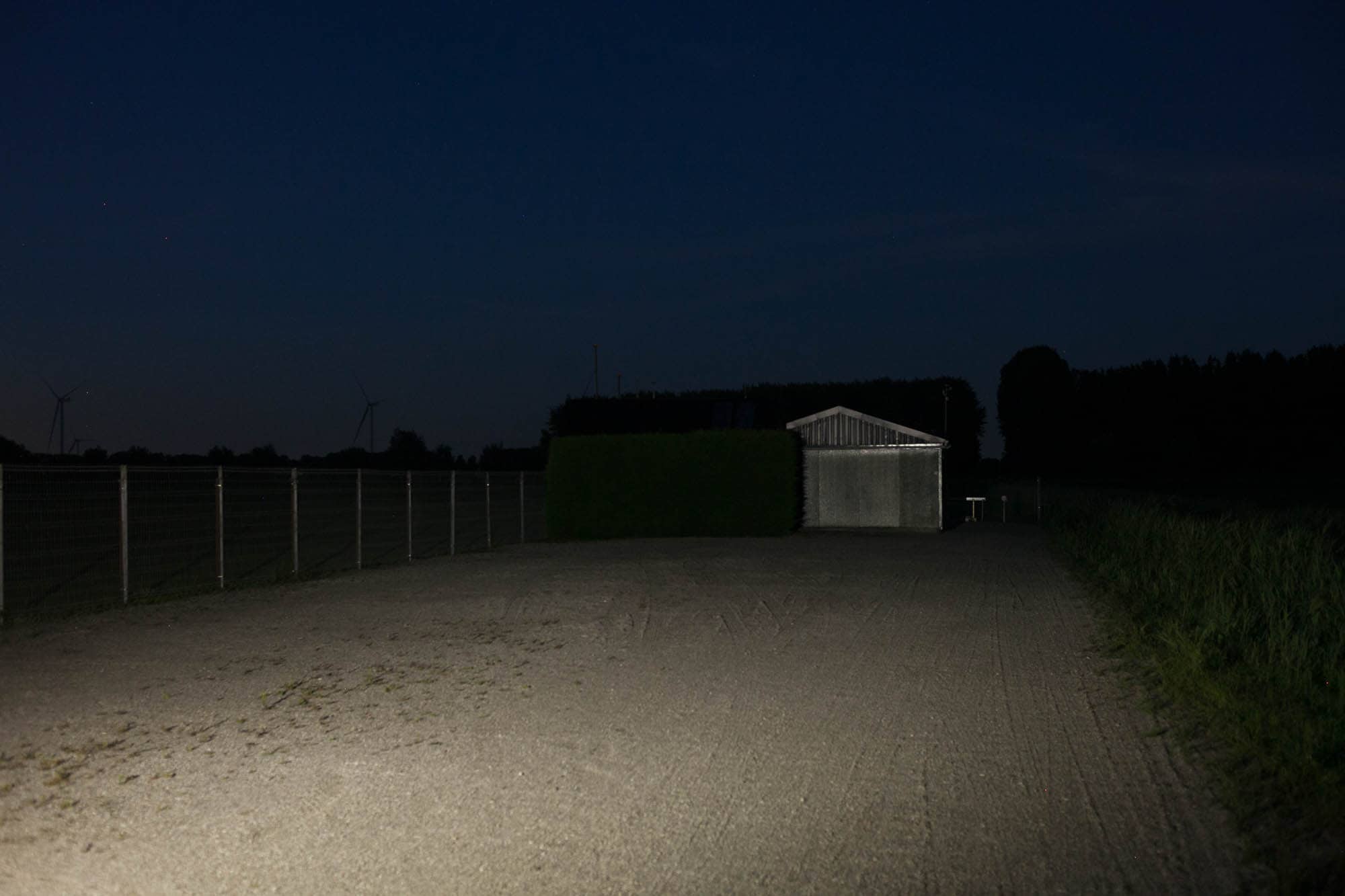
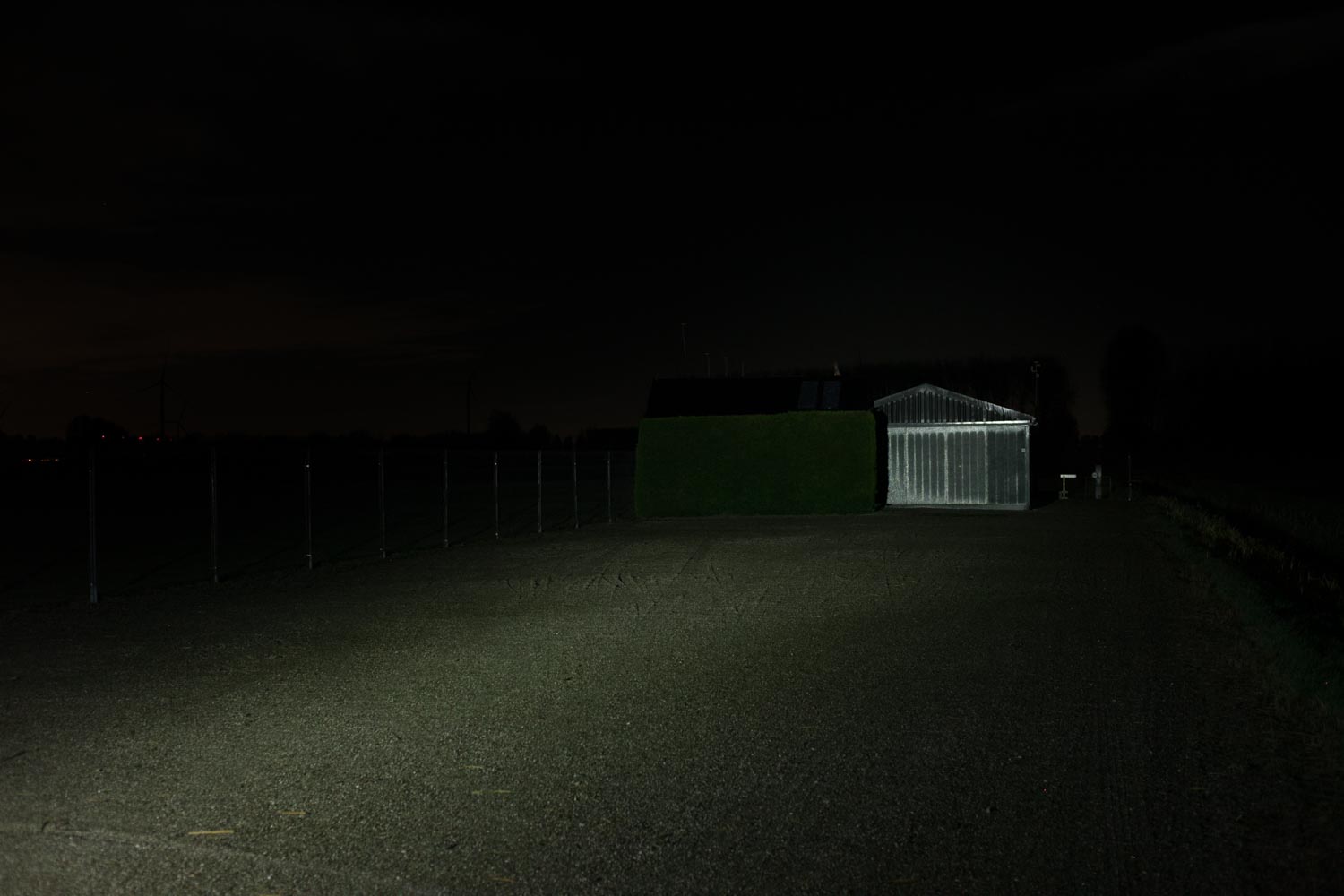
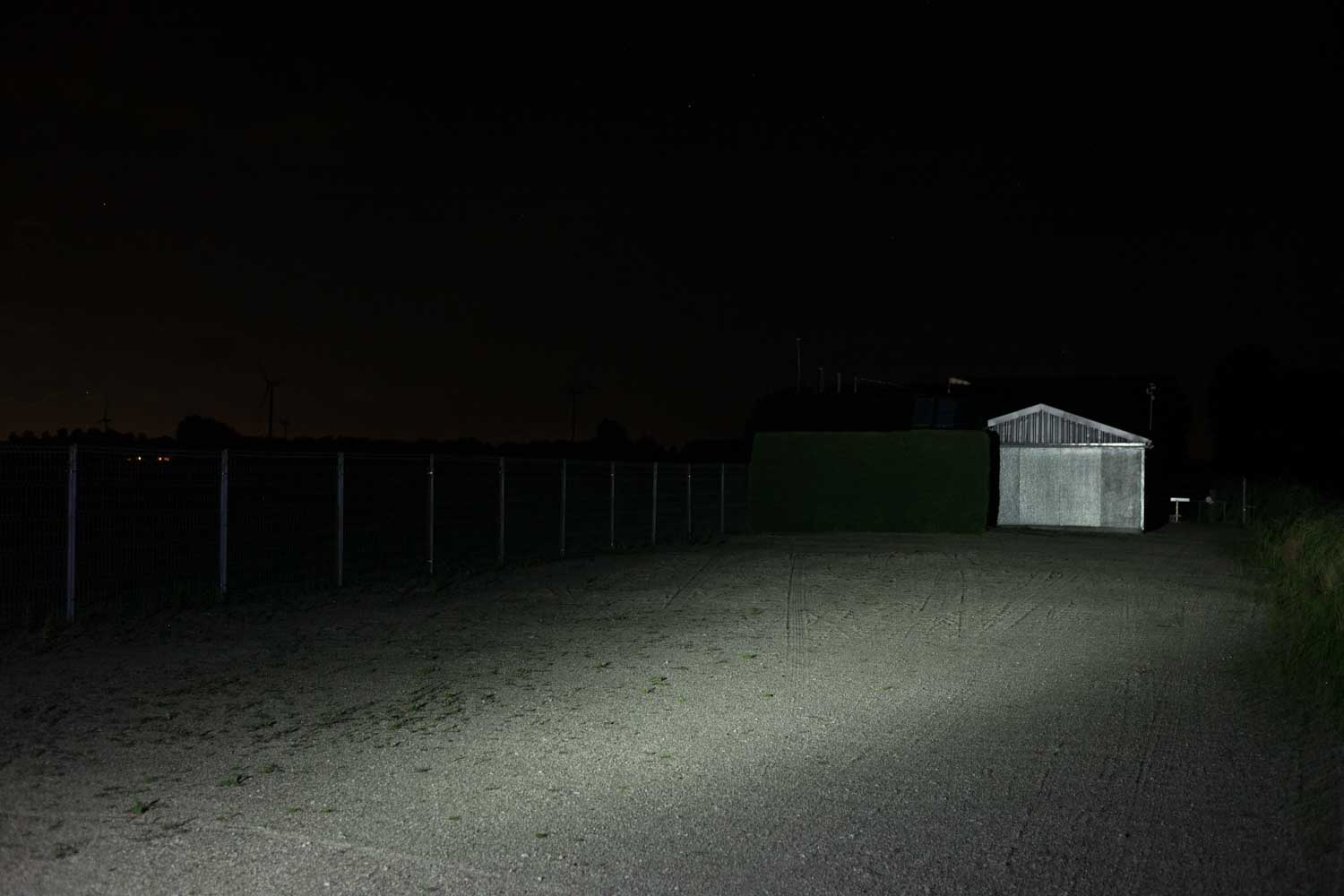
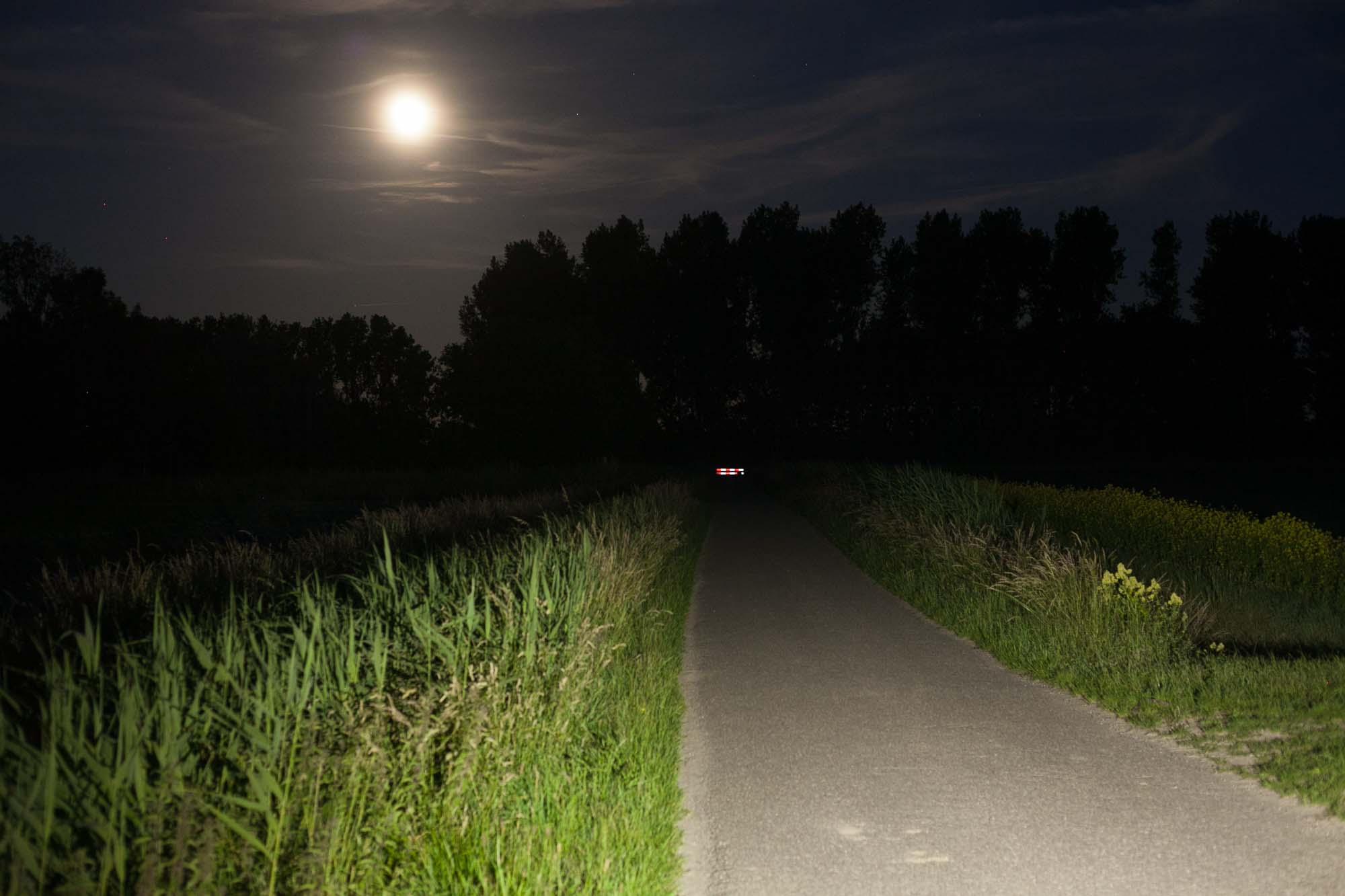


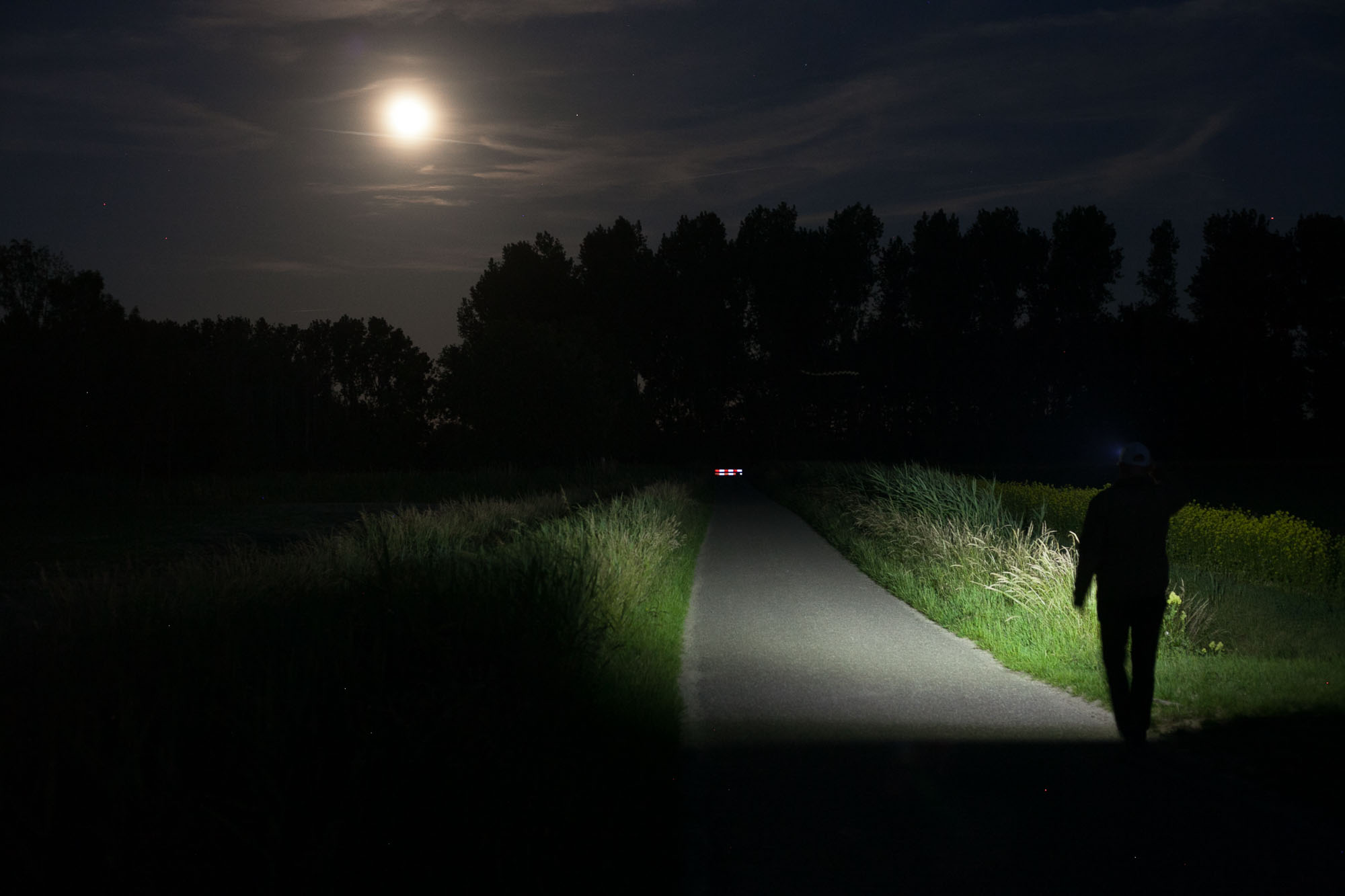

Even though this was about 11:30 PM, the sky wasn’t completely dark yet. 1 reason is because of the super moon that night. On the other side because of the season. The sun goes down really late in June.
Disclaimer: This flashlight was sent to me for review at no cost by Olight. I have not been paid to review, nor have I been holding back on problems or defects.
Final Verdict
Pros
- 6 different ways to use and carry
- Bright for its size
- No visible PWM
- Available in CW and NW
- Very lightweight (only 50 grams 1.85oz)
- Great runtimes
- High quality
- Nice design
Cons
- Compared to other batteries (18350,18650 etc), low capacity
- No designation on the light showing whether it’s the CW or NW
Explanation on star ratings:
1: Avoid: my phone flashlight would be a better choice – 2: Poor: significant defect or issues; almost unusable – 3: Average: some defects or issues; but still usable 4: Good: recommended (minor issues) – 5: Great: highly recommended

5 stars: ★★★★★
The Perun Mini is a very nice little flashlight, with lots of power and great design. They are available in a few different colors. I found that you can carry/use it 6 different ways. So everybody can have a go.
And Olight gives you 2 LED options, CW and NW. The beam is nice and smooth, on both versions. The NW has a slight advantage in terms of output, but negligible.
Having direct access to Moon, 1 main mode, Turbo, and SOS, is very nice. If you are looking for a 16340 type right-angle flashlight, this might be one to keep in mind.
Olight Perun Mini discount code
Use our exclusive 1lumen discount code to get an extra 10% off anything you order at Olightstore.com (USA). Coupon code: 1lumen
Note: the link below goes to the normal version. The desert kit was a limited edition.
1lumen selects and reviews products personally. We may earn affiliate commissions through our links, which help support our testing.
